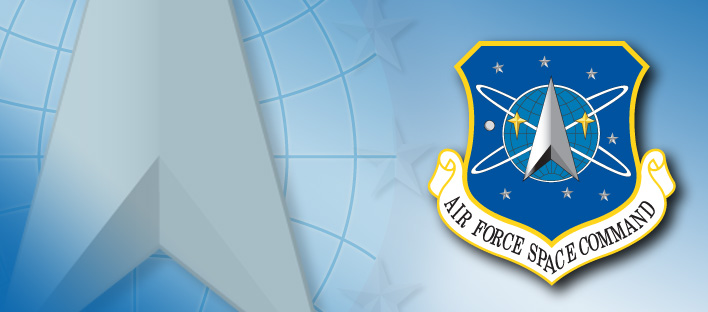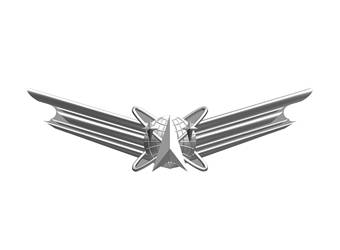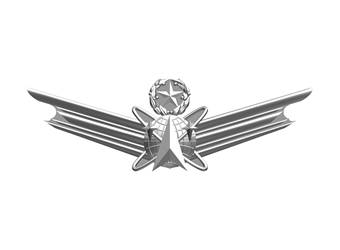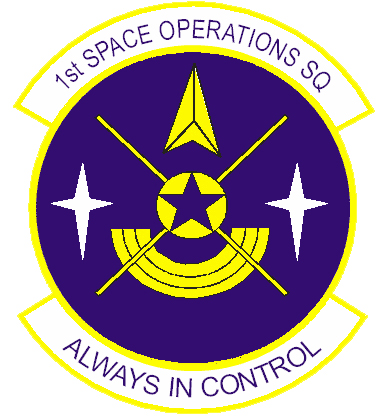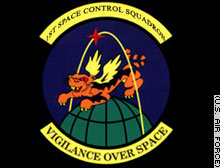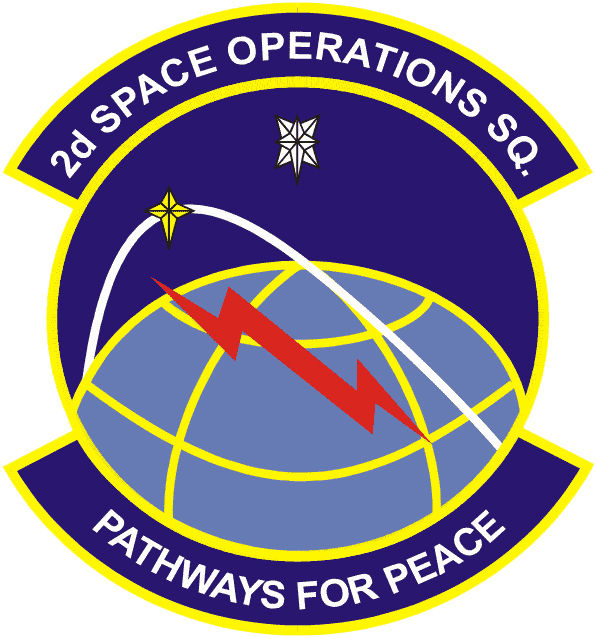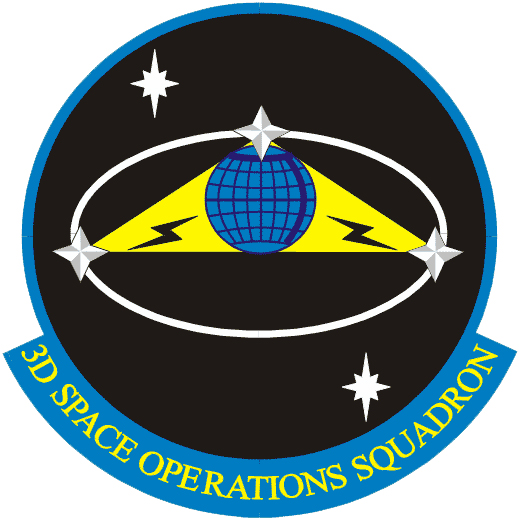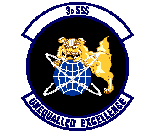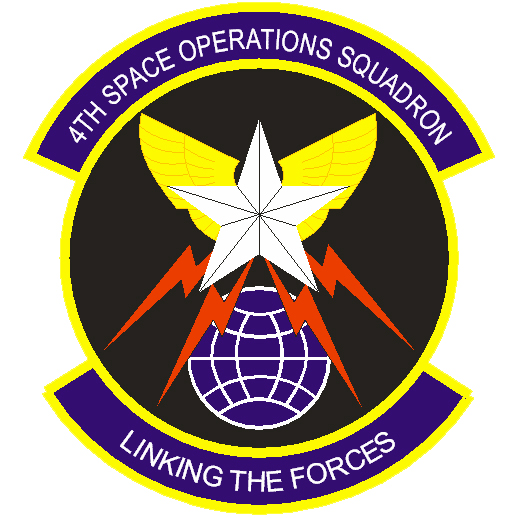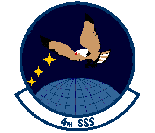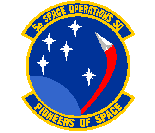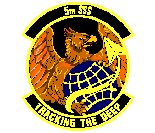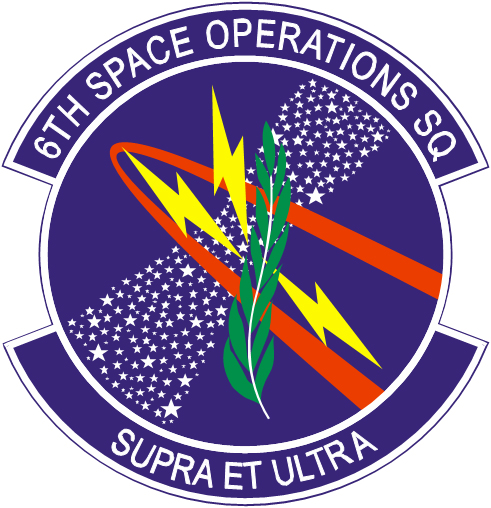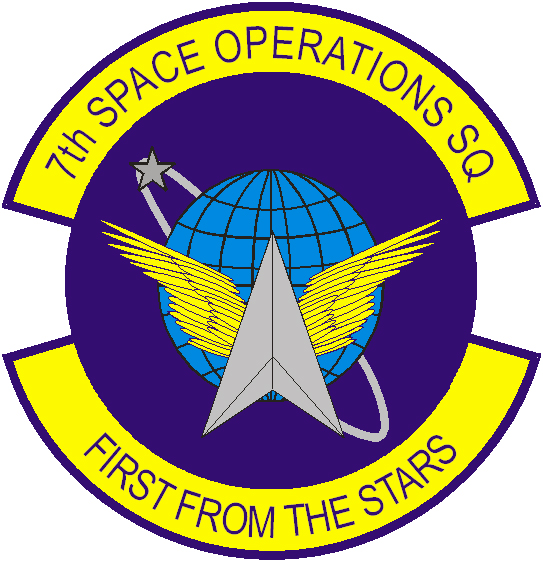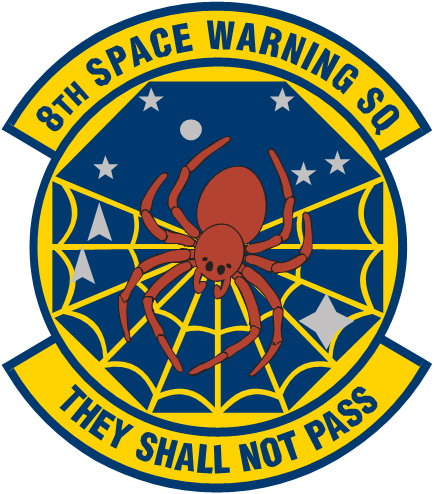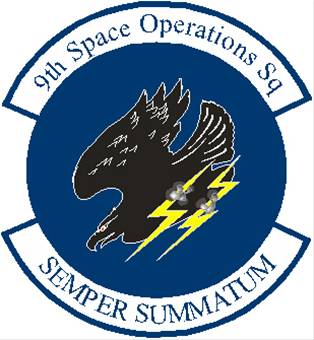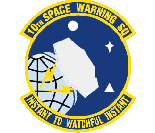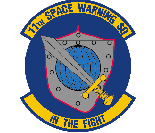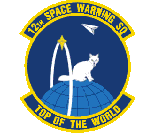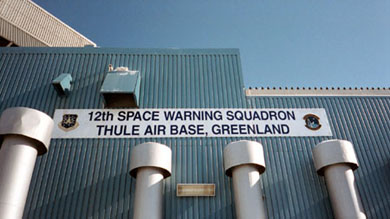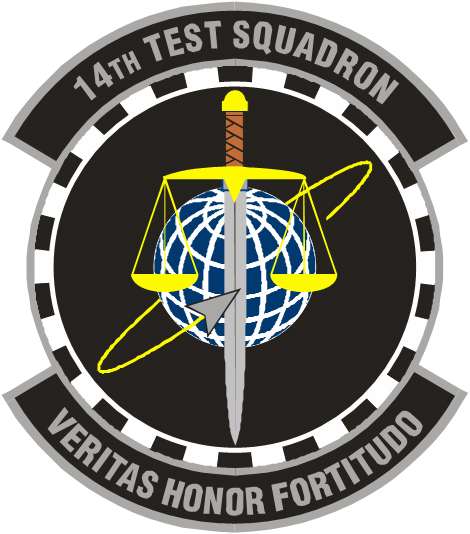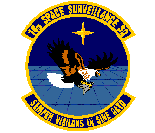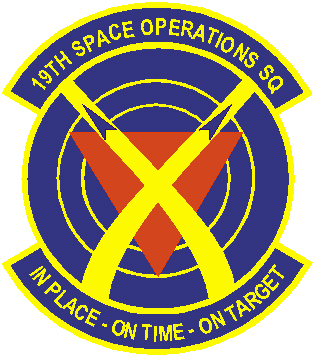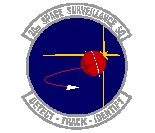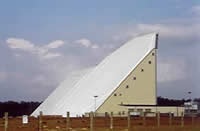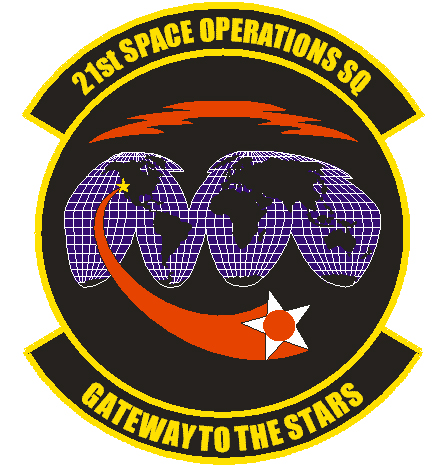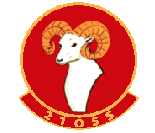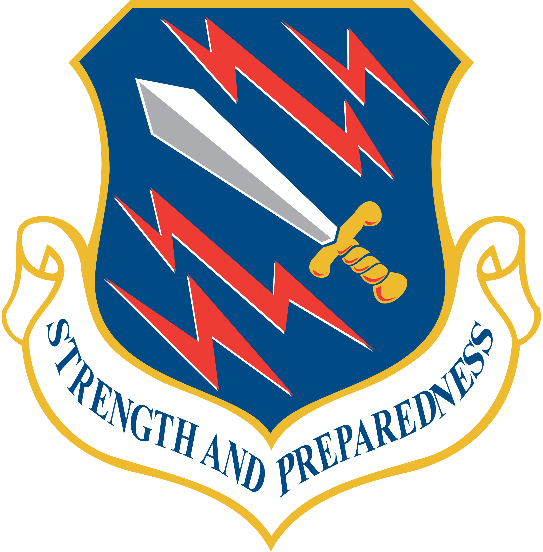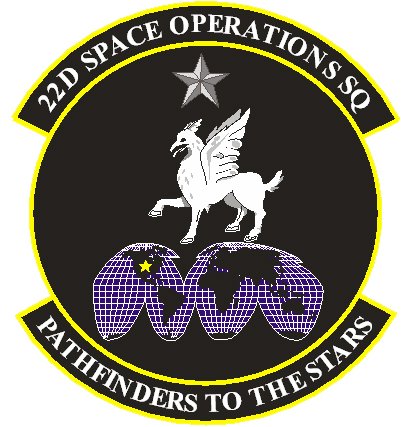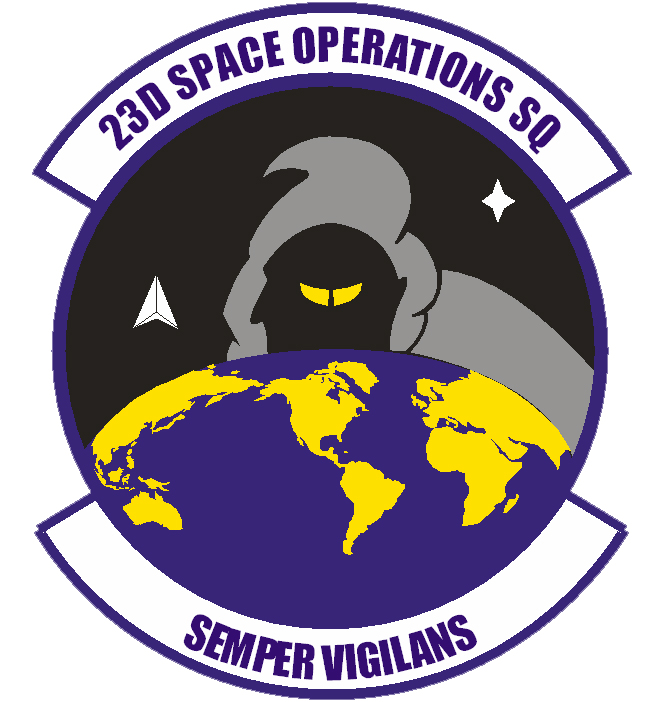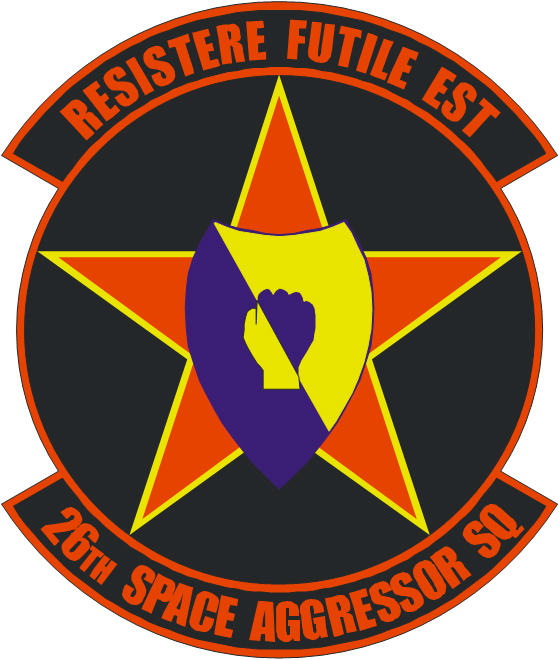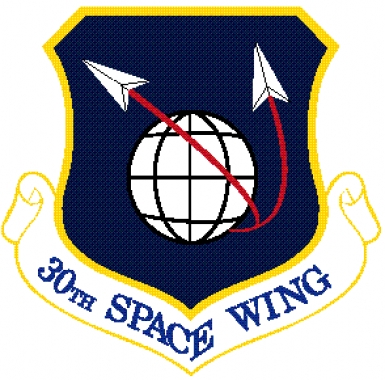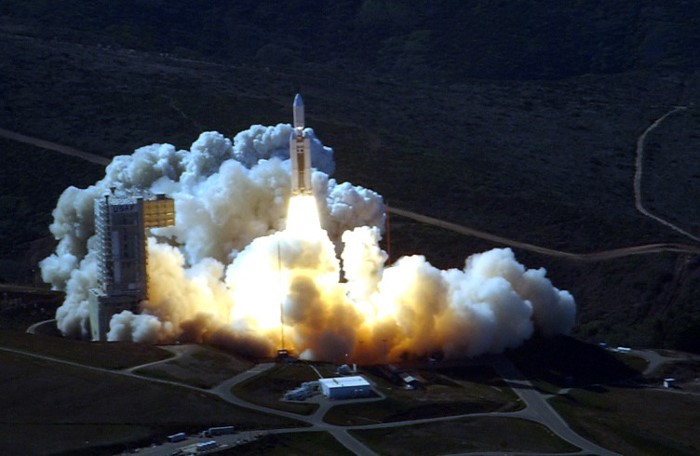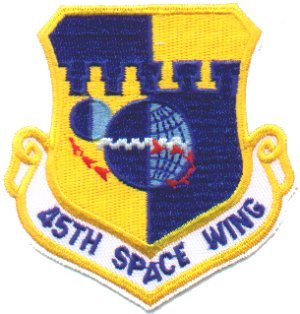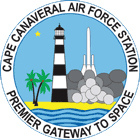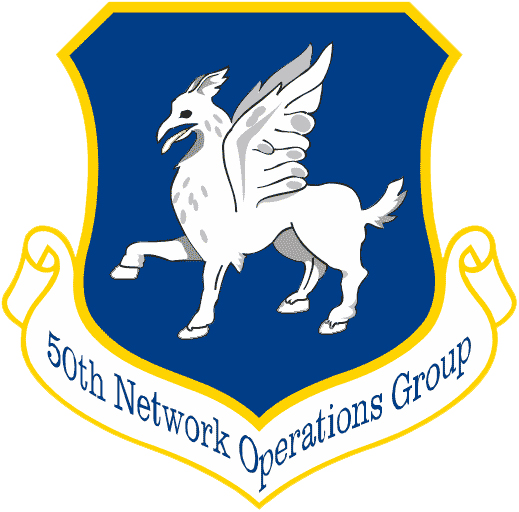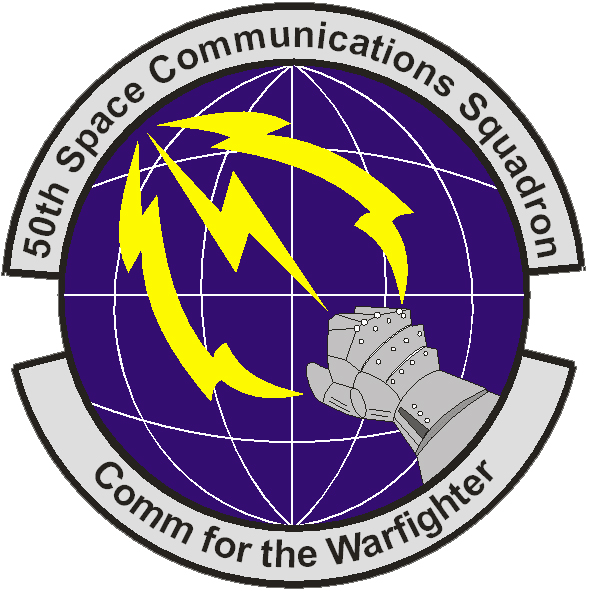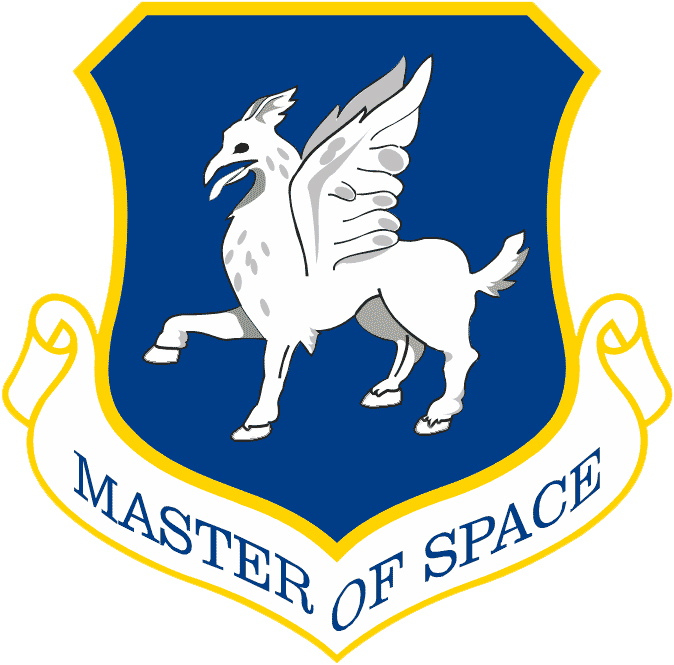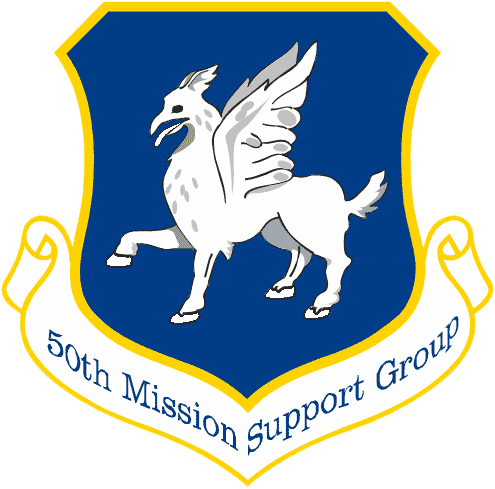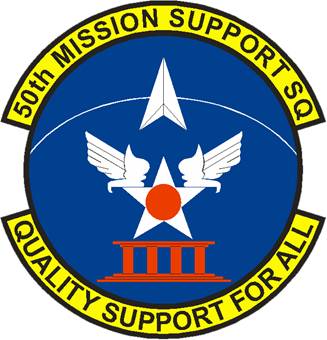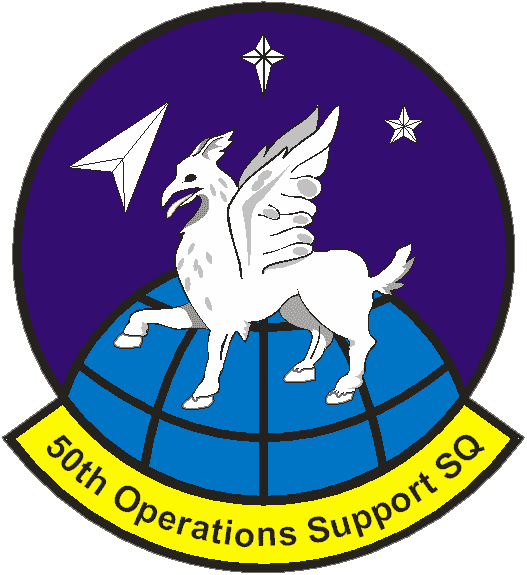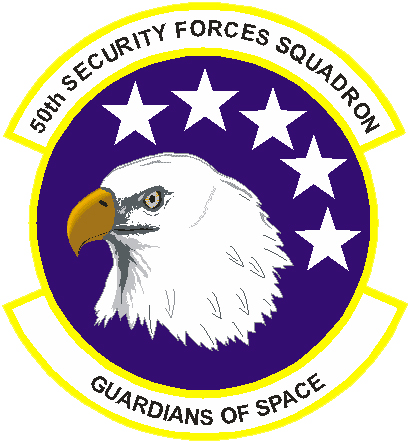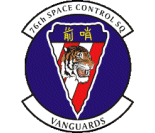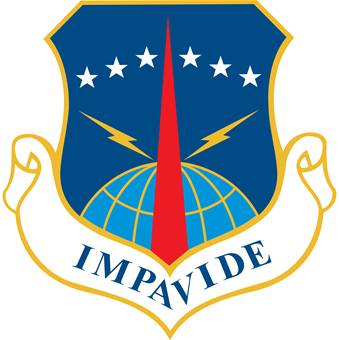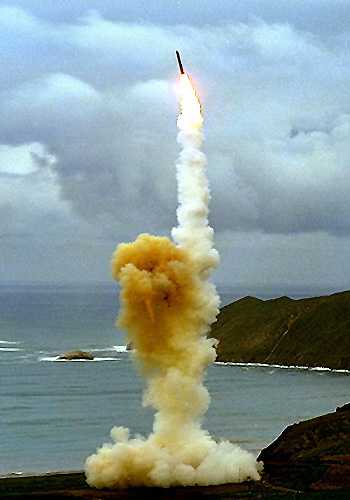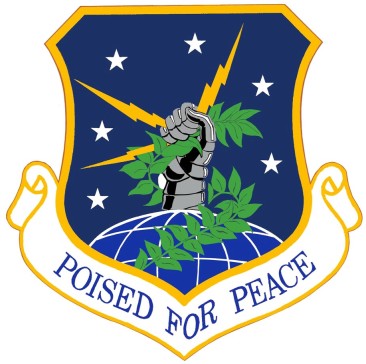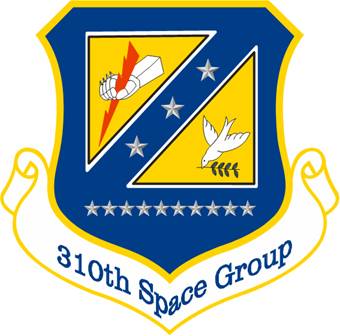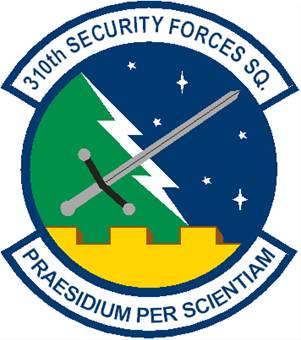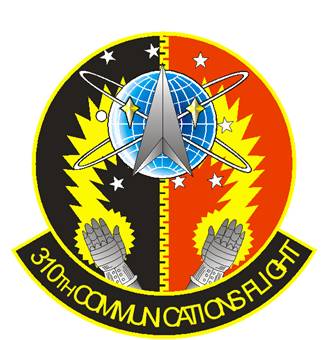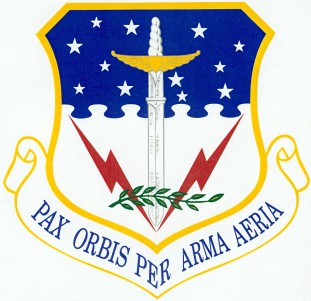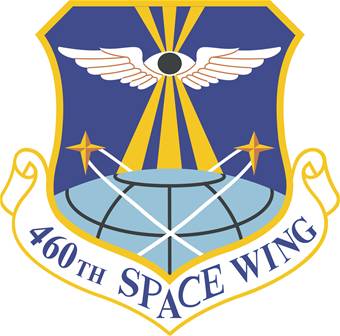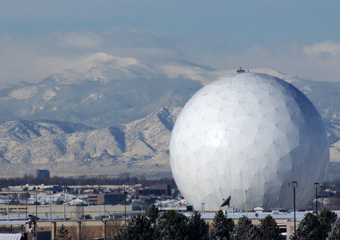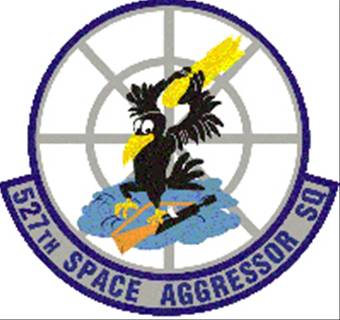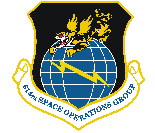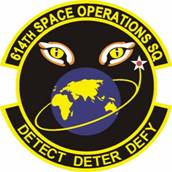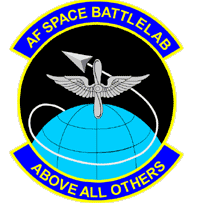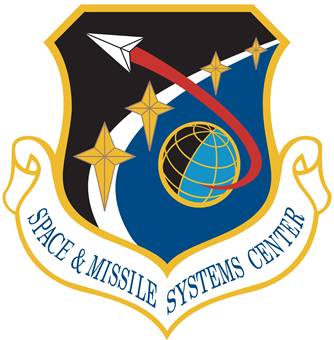|
Space Command |
||||||
|
||||||
|
||||||
The 1st Space Operations Squadron is a component of the 50th Operations Group, 50th Space Wing, Schriever Air Force Base, CO. It is the only Air Force Space Command squadron providing consolidated spacecraft command and control support for Defense Support Program, Navstar Global Positioning System, and research and development satellite systems. The squadron operates and maintains 24-hour Air Force Satellite Control Network command and control capability for GPS, DSP and MSX constellations. The 1st SOPS also operates and maintains a research and development space system providing vital weather data worldwide. The 1st SOPS performs launch and early-orbit operations for GPS and DSP systems including satellite activation, initial checkout, and transfer to mission orbit. It plans and executes tracking, telemetry, and commanding functions for GPS, DSP, MXS and a NASA R?D satellite to maintain spacecraft state-of-health, sustain on-orbit operations, and accomplish mission taskings. They respond to all satellite emergencies, and support end-of-life testing and disposal operations for GPS, DSP and MXS and R?D spacecraft as required. The squadron maintains DSP spacecraft positional knowledge to 200 meters and distributes data to worldwide users. They maintain the capacity to support at least six contacts for each DSP satellite per day. When required, the squadron can relocate within 48 hours to Onizuka Air Force Station, CA, the 1st SOPS back-up node, to perform limited command and control to sustain on-orbit operations of assigned DSP and GPS spacecraft. The unit also completes 100 percent of MSX and R?D training and evaluation. A four-person mission control crew, conducting 24-hour operations conducts the three major functions of satellite control; telemetry, tracking and commanding. The four-person crew consists of a crew commander, crew chief, a satellite systems operator, and a ground systems operator. Orbital analysts and program engineers provide program specific knowledge and support to the crews. The operators perform pre-contact planning, real time contact, and post-contact evaluation. The squadron conducts more than 2000 contacts a month. As Air Force Space Command's only multimission Satellite Operations Control Center, the squadron is tasked with: * Conducting command and control for four distinct
constellations:
Approximately 160 active duty Air Force members and seven Department of Defense civilians are assigned to the 1st Space Operations Squadron. Air Force Space Command's Associate Reserve Squadron, the 7th Space Operations Squadron, is assigned to support the 1st Space Operations Squadron. The unit was originally activated on February 14, 1961 as the 1st Aerospace Control Squadron which was in operation until April 1976. On October 5, 1987, the squadron was reactivated, renamed the 1st Satellite Control Squadron, and began its ever-growing satellite control mission. On February 16, 1988 the squadron began its first commanding on the DSP constellation. The Space Operations Center was operationally turned over to Air Force Space Command on December 21, 1989. The SOC increased its mission on February 20, 1990, when the DMSP mission was operationally turned over. Reactivated on January 30, 1992 as the 1st Space Operations Squadron, the unit received satellite command authority for the first research and development satellite controlled by Air Force Space Command, Technology for Autonomous Operational Survivability, in May 1996. On December 4, 1998 the squadron assumed command and control capability on the Midcourse Space Experiment which became an operational program on October 1, 2000 with the first-ever transfer of operations from the Ballistic Missile Defense Organization to Air Force Space Command. |
||||||
|
.
The 1st Command and Control Squadron, Cheyenne Mountain Air Force Station, CO, tasks the worldwide Space Surveillance Network to get positional data for all man–made Earth–orbiting space objects. The squadron is a geographically separated unit of the 21st Space Wing, Peterson AFB, CO. The squadron operationally commands, controls, and tasks the worldwide space surveillance network of more than 26 operational sensors for the purpose of identifying and cataloging all man-made objects in space. These space activities directly support the United States Space Command Space Control Center, national systems, and civil space missions. The mission of the 1st CACS is to provide command and control to all 21st Space Wing space surveillance sites in the Space Surveillance Network. Information from 20 sites is forwarded to the unit for compilation and analysis. The unit receives more than 70,000 observations daily to maintain a database of more than 9,500 Earth–orbiting space objects. This information is made available to customers worldwide through an electronic bulletin board. The 1st CACS is the focal point for organizations, such as NASA, who need vital, up–to–the–minute information on space debris. The 1st CACS plays a key role in each launch, flight and return of the space shuttle, ensuring accurate positional data is available on all objects in the shuttle's orbital path. The unit also tracks objects moving out of a stable orbit that will eventually reenter the Earth's atmosphere. Examples of this are two–ton Chinese satellite, about the size of a car, and a satellite with a 12–mile tether that reentered the Earth's atmosphere and burned up. Information on reentering satellites is forwarded to U.S. Space Command 14 days before the object is projected to reenter the atmosphere. The squadron is responsible for monitoring and tracking nearly 9,500 manmade objects in space, ranging in size from a baseball to the Mir Space Station. The furthest object the unit tracks is farther away from the Earth than the Moon, making nearly on revolution every two weeks. The closest objects can make a complete revolution around Earth in less than 90 minutes. The 1st CACS: * Tasks the Space Surveillance Network to detect,
track and identify manmade objects in space;
In 1987, a Congressionally–mandated "Blue Ribbon Committee" was tasked to evaluate the overall efficiency and operation of the space surveillance portion of the Integrated Tactical Warning and Attack Assessment mission. Because of this study, Headquarters Air Force Space Command tasked the 1st Space Wing to develop and staff a full–time orbital analysis function composed of space systems specialists to look after the quality of the Earth satellite database. Over the next few years, the 1st CACS became a focal point for space surveillance and is responsible for maintaining positional data on more than 97.3 percent of the manmade earth–orbiting objects in space. Beyond supporting U.S. Space Command, the squadron supports more than 300 military and 2,000 civilian customers. |
||||||
|
. The 2nd Space Wing was a wing of the United States Air Force. It was the host wing at Falcon Air Force Station (later Base, now Schriever Air Force Base). It was deactivated on January 30, 1992 when the 50th Space Wing took its place. |
||||||
The 2nd Space Operations Squadron is a component of the 50th Operations
Group, 50th Space Wing, Schriever Air Force Base, CO. The squadron commands
and controls the Navstar Global Positioning System satellite constellation.
The squadron commands and controls the Navigation Signal Timing and Ranging Global Positioning System satellite constellation. Navstar GPS provides worldwide precision navigation service for U.S. and allied military forces as well as a host of civilian users. This user community is rapidly expanding and includes traditional land, sea and space navigation along with surveying, geodesy and a variety of research and development activities. The constellation is comprised of a minimum of 24 on-orbit satellites. The squadron operates and maintains the Master Control Station and a dedicated network of ground antennas and monitor stations to command and control and monitor the satellite constellation. The monitor stations passively track the navigation signals on all the satellites. Information is then processed at the MCS and is used to update the satellites' navigation messages. The MCS sends updated navigation information to GPS satellites through ground antennas. The ground antennas are also used to transmit commands to satellites and to receive the satellites' telemetry. Detachment 1, 2nd SOPS, located at Cape Canaveral Air Force Station, FL, is responsible for maintenance of the GPS Ground Antenna and test assets to support prelaunch compatibility testing of new GPS satellites, the operational satellite constellation, software and hardware developmental testing, training and contingency support at contracted sites on an "as required basis." The 2nd Space Operations Squadron was born out of the 2nd Surveillance Squadron, Air Defense Command, 9th Aerospace Division at Ent AFB, CO. The 2nd Surveillance Squadron was activated on January 16, 1962, and served as intermediary between various sensor sites and higher headquarters. On January 1, 1967, the 2nd Surveillance Squadron was deactivated. On October 3, 1985, the squadron was reborn at an activation ceremony at Vandenberg AFB, CA. In December 1985, the squadron was moved to its present location at Shriever Air Force Base and started using the Master Control Station. The squadron was activated on January 30, 1992, and on January 31, as part of the Air Force reorganization, the squadron also gained responsibility for its mission software and hardware maintenance. Approximately 150 active duty Air Force members and two Department of Defense civilians are assigned to the 2nd Space Operations Squadron. |
||||||
|
.
The mission of the 3rd Space Operations Squadron is to ensure reliable spaceborne communications to National Command Authorities and U.S./Allied Forces. The mission is accomplished by conducting launch and on-orbit operations for the Defense Satellite Communications System Phase III satellites, on-orbit operations for the NATO IIID satellite, and primary U.S. operations for the NATO IV/Skynet 4 constellations. DSCS III provides secure communications links to the National Command Authorities, theater commanders, and strategic and tactical forces worldwide. The NATO IIID and the NATO IV/Skynet 4 constellation provides dedicated military and diplomatic communications for NATO and the MoD. Operational crews are responsible for conducting, day-to-day telemetry analysis, satellite commanding, orbital data collection, and anomaly resolution for all of its assigned satellites. Additionally 3rd SOPS is responsible for launch and early orbit operations for the DSCS III constellation. The squadron accomplishes its mission through the command and control of no less than four communications satellite constellations incorporating 18, possibly 19 spacecraft: * DSCS III- The Defense Satellite Communications
System, Phase III is a globally distributed constellation of II satellites
that provide high bandwidth communications for the National Command Authorities,
theater commanders, and strategic and tactical forces worldwide.
The squadron was first activated on June 10, 1941, as the 3rd Photographic Squadron. During the first half of World War II, the squadron conducted airborne mapping operations of the United States, the West Indies, South America, Canada, and the famous "Hump" region in Asia. On May 19, 1944, the unit was redesignated the 3rd Photographic Reconnaissance Squadron (3rd PRS) and began training for aerial reconnaissance operations using highly modified B-29 Superfortress bombers (F-13). The 3rd PRS deployed to Saipan in September-October 1944 to begin reconnaissance operations over Japan. On October 31, 1944, a 3rd PRS F-13 became the first American aircraft over Tokyo since the famed Doolittle Raid in 1942. By the end of the war, the 3rd PRS had flown 460 combat missions mainly over Japan. Among these were post strike reconnaissance missions to document the destruction of Hiroshima and Nagasaki after the atomic bomb strikes. One of the photos appeared on the cover of "Life" magazine. The 3rd PRS was inactivated on March 15, 1947. In 1985, the initial cadre of Air Force NATO III and DSCS II satellite operators received training at Sunnyvale Air Force Station, Calif. These personnel relocated to Falcon Air Force Base in 1987 and became Operating Location-AB, Consolidated Space Test Center (OL-AB). These men and women became the nucleus of what would eventually become the 3rd Space Operations Squadron. On August 2, 1988, OL-AB began 24-hour operations at Falcon AFB. By May 1989, OL-AB was conducting stationkeeping maneuvers on NATO III and DSCS II satellites. On February 2, 1990, OL-AB was deactivated with the personnel and mission transferring to the newly activated 3rd Satellite Control Squadron (3rd SCS). In November 1990, the 3rd SCS was directed to relocated a DSCS II from over the Pacific to a position over the Indian Ocean to support of Operation Desert Shield. The series of relocation maneuvers were completed in December 1990 and the satellite was then configured for operational use. Combat crews saved a failing FLEETSATCOM spacecraft just as Operation Desert Storm commenced, ensuring the US Navy’s two carrier groups had command and control of their aircraft. During Operation Desert Storm, 3rd SCS crews maintained the NATO, DSCS, and FLTSAT constellations, ensuring communications was available at all times for warfighters deployed to Southwest Asia. On July 11, 1991, in a formal operations turnover ceremony, the squadron accepted complete operational mission transfer of all assigned satellite programs. This transfer officially established operational control of the assigned DOD communications satellites to Air Force Space Command. In addition to the DSCS, FLTSAT, and NATO constellations, the squadron was busy preparing for two additional satellite constellations, the Navy’s Ultra-High Frequency Follow-On (UHF F/O) and Milstar. In November 1991, the initial cadre of UHF F/O satellite operators began training. On January 30, 1992, as part of a reorganization at Falcon AFB, the 3rd SCS was redesignated the 3rd Space Operations Squadron (3rd SOPS). On March 25, 1993, the first UHF F/O was launched. Unfortunately due to an Atlas II rocket booster malfunction, the satellite was placed in the wrong orbit. Over the next several weeks, 3rd SOPS personnel planned and executed a series of 25 maneuvers to move the satellite to a super-synchronous orbit. 3rd SOPS personnel were recognized by the Commander of Air Force Space Command for their efforts. From 1993-1999, 3rd SOPS would conduct launch operations for nine additional UHF F/O satellites. The last, UHF F/O Flight 10, was launched on November 22, 1999. During late 1993 and early 1994, 3rd SOPS transferred control of the aging DSCS II and NATO III satellites to the 5th Space Operations Squadron (5 SOPS) at Onizuka Air Force Station. This move was made so 3rd SOPS could focus its operations on the newest generation communications satellites. In 1996, 3rd SOPS lost two missions and gained one. In June 1996, as part of an Air Force and Navy agreement, operations of the FLTSAT constellation were turned over to the Naval Satellite Operations Center (NAVSOC) at Pt. Mugu, CA. In December 1996, 3rd SOPS transferred control of the Milstar constellation to 4 SOPS. On December 18, 1996, 3rd SOPS gained control of five operating locations (OLs) located in Nebraska, Virginia, Guam, Italy, and Hawaii. The OLs were responsible for running the Air Force’s Satellite Management Centers, which monitored and controlled user access to UHF communications satellites. As part of the same agreement that transferred FLTSAT, the SMC’s mission was also transferred to the Navy. On March 23, 2000, Operating Location Charlie at Norfolk Naval Air Station, VA, became the last to transfer to the Navy, thus ending 3rd SOPS’ role. On July 2, 1999, as part of the same agreement that transferred FLTSAT to the Navy, operational control of UHF F/O Flights 2-9 transferred to NAVSOC. On February 10, 2000, after several months of on-orbit checkout, 3rd SOPS conducted its last UHF F/O sortie on Flight 10. On that day NAVSOC assumed control of the satellite and Air Force UHF F/O operations came to a close. As part of the Base Realignment and Closure (BRAC) directed realignment of Onizuka Air Force Station in 1996, 3rd SOPS assumed the DSCS III launch, the NATO IV/Skynet IV backup, and the NATO III missions from 5 SOPS. On January 20, 2000, 3rd SOPS conducted its first launch of a DSCS III satellite. The squadron conducted its second successful DSCS III launch on October 20, 2000. The last two DSCS III launches are currently scheduled for 2002 and 2003. The NATO IV/Skynet IV constellation transfer was completed on September 28, 2000, and the NATO III transfer occurred on March 29, 2001. In 2004, 3rd SOPS will assume satellite control authority of one of the DoD’s newest and most robust communications satellites, the Wideband Gapfiller System. As of February 2001, the 3rd Space Operations Squadron had approximately 150 active duty Air Force members and eight DoD civilians are assigned to the unit. The squadron supports 18, possibly 19, spacecraft, worth over $2.8 billion, in geosynchronous orbit. |
||||||
|
.
The 3rd Space Surveillance Squadron, located at Misawa Air Base, Japan, conducts deep space surveillance. The squadron is a geographically separated unit assigned to the 21st Space Wing, Peterson AFB, CO. The mission of the 3rd SPSS is to detect, track, identify and catalog man-made objects orbiting Earth. The squadron is one of two Deep Space Tracking System squadrons located throughout the world. The DSTS tracks objects orbiting more than 22,300 miles above the Earth. More than 9,500 man-made objects orbit the Earth, ranging in size from a baseball to the Mir space station. The 3rd SPSS forwards this data to the 1st Command and Control Squadron and the Space Control Center, Cheyenne Mountain Air Station, CO. The 1st CACS and the center use this information, along with other data, to catalog and identify all man-made Earth-orbiting objects. Several agencies use this information for everything from collision avoidance to intelligence. Because of its mission, the 3rd SPSS works closely with Det. 3, 18th Intelligence Squadron, Schriever AFB, CO. The detachment provides specialized intelligence information necessary for the 3rd SPSS to perform its deep space surveillance mission. Though Det. 3 is controlled by the 18th IS at Schriever AFB, it is an administrative subordinate of the 544th Intelligence Group at Peterson. The contract to construct the present site of the 3rd SPSS (project name RINGO) was awarded on August 27, 1989, and was completed on March 16, 1991. Two antennas, an operations building, support building, pump housing and entry control point were constructed. Construction of the third antenna began on October 1, 1991, and was completed on May 31, 1992. The last site building, UPS building, was finished in August 1994. The initial DSTS obtained initial operating capability in April 1994. The site is situated on 37 acres. The 3rd Space Surveillance Squadron was originally constituted as the 3rd Surveillance Squadron on 10 August 1990. The squadron stood up as Det. 3, 73rd Space Group in January 1991. Redesignated as the 3rd Space Surveillance Squadron, it activated, on 1 October 1992 at Misawa AB, Japan. Assigned to the 73rd Space Group, the 3rd was tasked with operating passive sensors for the Deep Space Tracking System. The 3rd SPSS was reassigned to the 21st Operations Group on 26 April 1995. |
||||||
|
.
The 4th Space Operations Squadron is a component of the 50th Operations Group, 50th Space Wing, Schriever Air Force Base, CO. It is responsible for overall command and control of the Milstar satellite constellation. The unist is responsible for the activation and operation of the Milstar satellite constellation--the United States’ top priority command and control system. It organizes, trains, evaluates, and certifies operational crews who provide satellite command and control and payload management. It leads database maintenance performed by USAF and contractor teams and is responsible for maintenance of Milstar equipment at Schriever AFB. In addition, the unit is responsible for activation and operation of three mobile satellite command and control vans supporting two commanders-in-chief. The mission of the 4th Space Operations Squadron is to ensure the Milstar system provides survivable, enduring, minimum essential command and control communications through all levels of conflict for the National Command Authorities and warfighting Commanders-in-Chief worldwide. The 4th SOPS operates the $31 billion Milstar system executing communications management, satellite command and control, and ground segment maintenance for the Milstar constellation. The squadron is responsible for command and control of the Milstar satellite constellation through the Milstar Satellite Operations Center, Mobile Constellation Control Stations, and the Milstar Support Facility. The MSOC personnel perform satellite command and control, communications resource management, systems engineering support, mission planning, and anomaly resolution for the Milstar system. The MSOC has two fixed CCSs, which interface with the geographically distributed Mobile CCSs, executing satellite command and control. The Milstar Support Facility personnel, also located in the Operations Building perform ground control maintenance and testing, and hardware and software configuration control. Communications resource management includes satellite communications channel apportionment and monitoring payload use. Specifically, operations support personnel plan, execute, and monitor payload use allocations from the NCA level all the way down to tactical users in the field. These functions are unique at the squadron level as other communications programs’ channel apportionment are allocated by higher headquarters agencies. The 4th SOPS provides operators for three mobile Constellation Control Stations located at the 721st Mobile Command and Control Squadron, Peterson AFB, CO, Schriever AFB, CO, and the 55th Operations Squadron, Offutt AFB, NE. At higher readiness levels and during exercises, these personnel deploy with CINC U.S. Space Command and U.S. Strategic Command respectively, providing survivable, enduring, and secure communications and constellation command and control throughout the entire conflict spectrum including trans and post attack phases of nuclear war. The Milstar system is composed of three distinct segments: The Space Segment (satellites), the Terminal Segment (users), and Mission Control Segment (ground control stations). The Milstar multi-satellite constellation links command authorities to high priority U.S. forces via Milstar terminals on aircraft, ships, submarines, trucks, and ground sites with encrypted voice, data, teletype, or facsimile communications. The Mission Control Segment provides satellite command and control and mission support to the Milstar constellation. As of May 1999, two of the projected four satellites were on orbit. The 4th Space Operations Squadron gains its heritage from the 4th Photographic Squadron, which was activated on June 10, 1941, at March Field, CA. This unit saw a lot of action in the Pacific Theater during World War II, until it was inactivated on April 14, 1946. It was reactivated as the 4th Reconnaissance Squadron (Very Long Range) in December 1946 and inactivated on June 29, 1949. In May 1952, the unit was reactivated as the 4th Strategic Reconnaissance Squadron (Medium), and inactivated on July 1, 1958, at Rickenbacker AFB, OH. The 4th Space Operations Squadron was activated on April 30, 1992, from the 4th Reconnaissance Squadron, with its new mission to operate the Milstar satellite communications system. Approximately 200 active duty Air Force members and 11 Department of Defense civilians are assigned to the 4th Space Operations Squadron. |
||||||
|
4th SPACE CONTROL SQUADRON
THE 4th SPCS
MISSION
HISTORY
|
||||||
|
.
The 4th Space Surveillance Squadron, Holloman Air Force Base, NM, provides space surveillance capabilities for the National Command Authorities and unified commanders worldwide. Its mission is to perform mobile space surveillance communications and space data relay. The squadron is a geographically separated unit assigned to the 21st Space Wing, Peterson AFB, CO. The 4th SPSS is tasked with: * Operating and maintaining mobile space surveillance,
communications, and data relay systems that support U.S. Space Command
and theater commanders;
The 4th SPSS operates and maintains mobile space surveillance, communications, and data relay system that supports U.S. Space Command and theater commanders during contingency operations. The unit conducts a number of mobile and transportable operations that provide critical connections between the National Command Authorities, USSPACECOM, 14th Air Force and squadron-level elements. The 4th SPSS supports warfighters by establishing dedicated inter- and intra-theater links for critical space surveillance data and communications. The unit initially activated in September 1986 as Detachment 2, 6960th Electronic Security Command and provided training for ESC. It was reassigned to Headquarters, Continental Electronic Security Division in October 1986 and was reassigned again, this time to Headquarters, Space Electronic Security Division in May 1988. In May 1989, it was reorganized under the 694th Electronics Security Wing. The low altitude space surveillance system was activated by Air Force Space Command in October 1990. The unit was redesiganted as the 4th Surveillance Squadron. One year later, it was redesignated as the 4th Space Surveillance Squadron. During this time, the unit continued to perform a research and development mission and a mission to train newly assigned low altitude space surveillance operators until April 1993. The squadron was assigned to the 73rd Space Group and in April 1995 merged with the 21st Space Wing. In April 1996, the unit moved operations from its home at Lackland AFB, TX, to Holloman AFB, NM. |
||||||
|
.
The 5th Space Operations Squadron a component of the 50th Operations Group, 50th Space Wing, is located at Onizuka Air Station, CA. It is responsible for day-to-day command and control for the DSCS III satellites and the North Atlantic Treaty Organization communications satellite program. The squadron has prime launch responsibility for DSCS III, NATO IV/Skynet IV and the Inertial Upper Stage. The 5th SOPS is prime backup node for NATO IV/Skynet IV and DSP on-orbit operations. In addition, the squadron provides backup telemetry and commanding support to the Space Shuttle Control Center, various NASA programs, the Atlas, Titan and Delta booster rockets. The squadron plans, conducts and support launch, early orbit and on-orbit operations for several DoD, allied, civil and commercial space missions, including Inertial Upper Stage for NASA and DoD space assets, NATO and the United Kingdom satellite communications systems, and Defense Satellite Communications Systems. In addition to satellite programs, the squadron provides tracking and telemetry support on every space shuttle mission and several expendable boosters, such as Delta and Athena, for DoD, NASA and commercial launches. The squadron has primary responsibility for the first five days of all British Skynet 4 satellites during launch and early orbit. In addition, 5th SOPS performs an active backup role to all NATO IV/Skynet 4 on-orbit operations. As of May 1999, the unit was reportedly also responsible for daily operation of the remaining NATO III satellite. The IUS is used to take satellites from low Earth orbit to geosynchronous altitude or other trajectories. The IUS and its payload are launched on a Titan IV or the space shuttle. The 5th SOPS commands the IUS for DoD missions, which include placing Defense Support Program satellites into proper orbits. The 5th SOPS also provides tracking, telemetry, and commanding support to the National Oceanic Atmospheric Administration's polar and geostationary weather satellites and NASA's Tracking and Data Relay Satellites. The 5th SOPS was provisionally activated as Operating Location-A, 750th Space Group, on October 1, 1992. However, its roots began in the early 1960’s as the Air Force Satellite Control Facility. This facility established one of the Air Force’s major roles in space: satellite operations. AFSCF was later divided into the 2nd Space Test Group and the Consolidated Space Test Center on October 1, 1987 when AFSPC took over Onizuka Air Force Base, now Onizuka Air Station. OL-A encompassed the CSTC divisions of VOS, VOE, and VOD. 5th SOPS was officially activated November 22, 1993 under the 50th Operations Group. In a three week span, in late 1993, the squadron flawlessly launched a DSCS III and a NATO IV communication satellite, supported NASA’s Hubble telescope repair and activated as the 5th Space Operations Squadron. The squadron has launched the IUS in support of NASA programs including all seven TDRS and three inter-planetary spacecraft: Galileo (Jupiter), Magellan (Venus), and Ulysses (Sun). The squadron most recently supported the deployment of Skynet 4D and 4E to geosynchronous orbit. Approximately 35 active duty military and four DoD civilians are assigned to the squadron. There are approximately 120 contractors conducting space operations in support of the 5th Space Operations Squadron. |
||||||
|
.
The 5th Space Surveillance Squadron, Royal Air Force Feltwell, United Kingdom, is responsible for detecting, tracking and identifying the status of satellites orbiting Earth. The unit is a geographically separated unit of the 21st Space Wing, Peterson AFB, CO, and is the only 21st SW unit operating both the DSTS and LASS systems from one location. The 5th Space Surveillance Squadron detects, tracks and identifies deep space satellites using the Deep Space Tracking System (DSTS) and low altitude satellites using the Low Altitude Space Surveillance (LASS) system. Both the DSTS and LASS systems are passive surveillance units. Other DSTS antennas are operated by the 3rd SPSS, Misawa AB, Japan. Deep space objects are those with orbits that take more than 225 minutes to rotate the earth. Satellites are categorized as low altitude if their orbit is generally less than 225 minutes.  The site passively tracks satellites by collecting radio frequency emissions
from the satellites. They transmit that information to the 2nd CACS, Schriever
AFB, CO. The 2nd CACS then passes this information on to the space surveillance
center at Cheyenne Mountain AS, CO. The center uses this data, along with
data from other sensors, to maintain a catalog of man-made objects in space.
These passive surveillance systems are the newest generation of space tracking capabilities and continue a series of developments that began with the realization, after the first Sputnik launch in 1957, that the United States had little ability to track space objects. The first space surveillance sensors were radars and telescopes. DSTS and LASS augment and complement the radar and telescope's capabilities, providing a further dimension to space surveillance technologies. The 21st Space Wing's tracking of all orbiting man-made objects allows the United States and other nations to safely launch space vehicles, avoid collisions in orbit, and remain aware of international space activity. The 5th SPSS is tasked with: * Locating, tracking and identifying deep space
and low altitude satellites in support of the commander in chief, U.S.
Space Command's missions of space control and force enhancement;
The squadron was originally activated as Detachment 2, 73rd Space Surveillance Group in February 1989. The Air Force redesignated it as the 5th SPSS in October 1989. The site reached operational acceptance in September 1993. When the 73rd Space Group inactivated in April 1995, the squadron fell under the 21st Operations Group of the 21st Space Wing as a geographically separated unit. With the closure of the 17th Space Surveillance Squadron at RAF Edzell, Scotland, in October 1996, the 5th SPSS incorporated the LASS mission, becoming the only 21st SW squadron which conducts these two missions from one operations center. |
||||||
|
.
The 6th Space Operations Squadron, a component of the Reserve 310th Space Group, is located at Schriever Air Force Base, CO. The 6th SOPS activated at Schriever in September 1998 to replace the 8th SOPS which had recently inactivated. The 6th Space Operations Squadron operates the DMSP satellite in support of the DoC and the National Oceanic and Atmospheric Administration. The unit's normal day-to-day mission is to maintain operational readiness at the Schriever facility. At the end of January 1999, to support a request from Air Force Weather Agency, the 6th SOPS began augmenting military weather satellite operations when the Air Force Weather Agency needed more satellite data. The National Oceanic and Atmospheric Administration, which provides information to both military and civilian weather agencies, operates all weather satellites. To meet the Air Force Weather Agency's request for more data, the NOAA supplemented its crew force with reservists from the 6th SOPS. The 6th SOPS has a five-person crew available to provide round-the-clock operations. Crew members work 16-hour shifts approximately one week a month. Besides 10 full-time active Guard and Reserve operators, Amburgey said the squadron has four traditional reservists supporting the operation on man-days. |
||||||
|
.
The 7th Space Operations Squadron, a component of the 310 Space Group, is located at Schriever Air Force Base, CO. The 7th SOPS was activated March 18, 1993, at Falcon (later, Schriever) AFB, and was the first Reserve unit to augment Air Force Space Command. The mission of the 7th Space Operations Squadron is to augment space operation squadrons of the 50th Space Wing. These activities include satellite emergencies, launch and early orbit, day-to-day routine operations and satellite disposal for the Global Positioning System and Defense Support Program satellites. As of late 1997. the personnel of the 7th SOPS had been tasked with augmenting the Air Force's 50th Space Wing space operations in such areas as launch support, satellite emergency and satellite disposal for the Global Positioning System and the Defense Support Program. In addition to augmenting the 50th SW in day-to-day routine GPS and DSP satellite operations, 7th SOPS reservists also provide valuable assistance during the launch and early orbit of new satellites, on-orbit emergencies, and satellite disposal. During unit training assembly weekends, the 7th assumes the majority of GPS and DSP satellite commanding functions from the 50th SW. The squadron's 30 reservists usually schedule their two weeks of annual training during peak times, like launches. The initial concept of the 7th SOPS was drafted just after Operation Desert Storm, when a need was identified for a surge capability to handle the increased workload during a contingency operation. The squadron is a Category "A" Associate Reserve Squadron whose members serve at least two days of active-duty each month, plus two-weeks a year. The unit's monthly active-duty days are spent in training and day-to-day satellite operations. The two week active duty shift is likely to be scheduled during a launch. During a wartime contingency, the squadron will mobilize to augment on a full-time basis. The 302nd Airlift Wing Consolidated Base Personnel Office at Peterson Air Force Base, CO, maintains the reservists records and provides administrative and personnel related services, while the 50th Space Wing oversees their training and wartime mobilization. The 7th Space Operatiosn Squadron traces its lineage to the 7th Photographic Reconnaissance Squadron which was activated January 28, 1942, at MacDill Field, Tampa, FL. May 15 of that same year, it transferred to Peterson Field, Colorado Springs, CO. The squadron’s primary mission was to train men in the art of photo reconnaissance. While there it flew P-38s, F-4s and F-5s. The pilots were commissioned officers and enlisted flight officers. In June 1942, their name was changed to the 7th Reconnaissance Squadron. In October 1943 the squadron moved to Will Rogers Field, OK. In the 51 year heritage of the 7th, it has performed many roles from training pilots and technicians for photo reconnaissance to the 7th Liaison Squadron providing operations and logistical support for the Inter-American Geodetic Survey in the Panama Canal Zone. The 7th Special Operations Flight was deactivated in 1972 at Hurlburt Field, FL. The squadron was consolidated and redesignated the 27th Special Operations Squadron in 1985 but remained inactive until March 18, 1993, when the 7th Space Operations Squadron was activated. Approximately 33 Air Force Reserve members are assigned to the 7th Space Operations Squadron. |
||||||
|
Mission Working inside a great 10-story pyramid-like structure, the men and women of the 7th Space Warning Squadron continuously scans the horizon for missiles, satellites and other man-made objects in space. Our primary mission is to detect, track and provide impact prediction of Sea-Launched (SLBMs) and Intercontinental Ballistic Missiles (ICBMs) launched towards North America to the North American Aerospace Defense Command (NORAD). Our secondary mission is space surveillance. We track man-made objects circling the earth in Low Earth Orbit (LEO). Our data, combined with that of other sensors, helps maintain the Satellite Catalog, an extensive database of over 27,000 man-made objects in orbit. Over 9,000 objects currently orbit the earth requiring accurate maintenance of the Satellite Catalog in avoiding satellite collisions and in ensuring safe launches of new satellites. The "eyes" of PAVE PAWS WEST is the Phased Array Warning System. The main building is shaped like a pyramid with a triangular base. The two radiating faces, each with thousands of radar elements (antenna), are tilted back at a slight angle. PAVE PAWS radar beams reach outward for nearly several thousand miles in a semi-circular sweep. History In June of 1975, it was announced that Beale Air Force Base would be the site for a new missile warning squadron. A multi-million contract for the building, the support facilities, and the computer hardware was awarded to Raytheon Corporation. Construction began in the spring of 1977 and was completed six months ahead of schedule in November 1979. The site was initially part of the Aerospace Defense Command (ADC). After ADC disbanded in December 1979, it was transferred to Strategic Air Command (SAC), continuing to report to the North American Aerospace Defense Command (NORAD). The 7th Missile Warning Squadron (7 MWS) was declared operational in August 1980. In addition to its missile warning mission, a new challenge presented itself in 1981 when the 7 MWS was tasked to also collect data on the Space Shuttle and its deployed satellites. After Air Force Space Command was formed, in September 1982, the 7 MWS began to report administratively to Space Command, through the 1st Space Wing, while continuing operational reporting to NORAD. July 1986 saw the arrival of the first Canadian Forces personnel. Canadians have filled three crew positions in the Missile Warning Operations Center since that time. Following several major Air Force reorganizations in 1992, the 21st Space Wing was activated at Peterson Air Force Base in Colorado Springs, Colorado. The 7 MWS began reporting to the 21st Space Wing and became known -- and is still known today as the 7th Space Warning Squadron (7 SWS). Point of Contact
|
||||||
|
.
The 8th Space Warning Squadron activated at Buckley Air National Guard Base, CO, on October 1, 1999, and is part of the 310th Space Group, Schriever AFB, CO, the only space group within Air Force Reserve Command. The 8th SWS, an associate unit to Buckley's 2nd SWS, operates the Space-Based Infrared System, a follow-on system for the Defense Support Program. The DSP is an early warning satellite program started in the early 1970s used to detect the infrared signature of missiles fired by enemy forces. The 8th SWS is the first space unit to integrate Reserve and Air National Guard members into an active-duty mission from the beginning stage. The 8th Space Warning Squadron was originally constituted as the 8th Missile Warning Squadron on 26 March 1986 and activated on 1 April 1986 at El Dorado AFS (later AS), TX, under Air Force Space Command. It was reassigned to the 1st Space Wing on 8 May 1987. While at Eldorado AS, the unit operated the AN/FPS-115 PAVE PAWS Radar. The unit was redesignated as the 8th Space Warning Squadron on 15 May 1992 and reassigned to the 1st Operations Group. It was reassigned to the 21st Space Wing on 8 June 1995 before inactivating on 30 September 1995. It was redesignated as the 8th Space Operations Squadron on 22 August 1997 and activated in the Reserve under the 310th Space Group on 1 September 1997 at Falcon (later Schriever) AFB, CO. It inactivated on 1 October 1998. Redesignated as the 8th Space Warning Squadron on 30 July 1999, it was activated in the Reserve on 1 October 1999 at Buckley ANGB, CO, under the 310 Space Group, 1 Oct 1999. A spider and its web dominate the 8th's unit emblem. An explanation of that emblem could aptly describe the unit's mission. The octagon surrounding the spider's web represents one of two PAVE PAWS radar faces which generate tracking beams represented by the web. The web's angling, 70 and 130 degrees, displays the coverage of the beams which reach out over the southwestern United States and beyond. Two missiles and a satellite trapped in the web represent the unit's mission of detecting ballistic missile attacks and tracking space objects. The "They Shall Not Pass" site became operational in May 1987 in the land of longhorns, barbecues and oil drilling. |
||||||
|
.
The mission of the 9th Space Operations Squadron is to augment the SPACEAF AOC in its ability to plan, synchronize, direct, integrate, and execute assigned forces in order to employ SPACEAF forces and integrate space power into worldwide national and military operations. The unit is tasked with: * Augmenting Combat Plans;
|
||||||
|
.
10th SPACE WARNING SQUADRON |
||||||
|
.
The 11th Space Warning Squadron, located at Schriever AFB, CO, was established by Air Force Space Command on January 23, 1994 and activated as an operational squadron on October 1, 1994. The mission of the 11th SWS is to provide "assured" theater missile warning to warfighters worldwide. The 11th Space Warning Squadron is one of several ballistic missile warning squadrons belonging to the 21st Space Wing at Peterson AFB, CO. The 11th, and its sister squadrons, form an early warning network of ground-based and space-based sensor systems that provide worldwide continuous surveillance and early warning of intercontinental ballistic missiles, sea-launched ballistic missiles and theater ballistic missiles. The 11th SWS operates and maintains the Attack and Launch Early Reporting to Theater, or ALERT, system. ALERT provides continuous surveillance and early warning of theater missiles and other threats in direct support of theater war fighters worldwide. The 11th SWS is the first operational unit using technological procedures developed following Desert Storm for the Air Force. The 11th SWS is tasked with: * Operating the ALERT tactical missile warning
system; and
|
||||||
|
.
The 12th Space Warning Squadron, Thule Air Base, Greenland—the northernmost U.S. base—provides tactical warning and attack assessment of ballistic missile attacks against the United States and Canada. The squadron is a geographically separated unit of the 21st Space Wing, Peterson Air Force Base, CO. The 12th Space Warning Squadron is the host unit for Thule AB and is one of five ground–based radar systems providing space warning for the 21st Space Wing, Peterson AFB, CO. The squadron provides attack warning and assessments of sea–launched and intercontinental ballistic missiles. It passes that information to the North American Aerospace Defense Command missile warning center, Cheyenne Mountain Air Force Station, CO. The squadron is also responsible for a portion of the Air Force Space Command space surveillance program and assists in tracking nearly 9,500 objects now in Earth's orbit. Additionally, as the installation commander for Thule Air Base, he is responsible for operation of the airfield and deep seaport, and providing total base support for more than 1,000 year-round residents of the base. The unit is a vital portion of the ballistic missile early warning system operation, which includes the 13th Space Warning Squadron, Clear Air Force Station, AK, and the Royal Air Force Station at Fylingdales–Moor in the United Kingdom. The 12th SWS is tasked with:
The origin of the 12th SWS goes back to the establishment of the Ballistic Missile Early Warning Site in 1961. Throughout the years, several commands were responsible for the base, including Northeast Air Command, Air Defense Command and Strategic Air Command. The unit was first designated as the 12th Missile Warning Squadron
and later became the 12th Missile Warning Group. Air Force Space Command
took control of Thule in 1983 and the unit was redesignated as the 12th
SWS in 1992.
|
||||||
|
.
The 13th Space Warning Squadron is assigned to the 21st Space Wing of the Air Force Space Command, both with headquarters at Peterson Air Force Base, CO, and is part of the Ballistic Missile Early Warning System. Operationally, the 13th SWS is controlled by the Missile Warning Center (MWC), part of the North American Aerospace Defense Command (NORAD) and by the Space Control Center (SCC), part of US Space Command. Both agencies are located at the Cheyenne Mountain Operations Center, CO. The unit's blason shows a blue and gold circle divided along its equator by a saw tooth line; a brown, upturned bugle horn suspended by red straps; below the bugle horn and the saw tooth is the upper half of a blue globe with white lines of latitude and longitude. The upper field, occupied by the bugle horn, is blue, and the bottom field, containing the globe, is gold. The saw tooth line suggests the rugged Alaskan terrain, and the Air Force colors, blue and gold, are used to signify continuous day and night operations. The bugle horn refers to the " Early Warning System" and the globe represents the "Over-the-Horizon" system. The 13th SWS is located at Clear Air Force Station, Alaska. It is 40 miles north of Mount McKinley and 80 miles south of Fairbanks. Until 15 December 2001, the 13th SWS managed and operated three AN/FPS-50 detection radars as well as one AN/FPS–92 tracking radar. When Thule and Fylingdales were converted to phased-array radar systems, Clear became the last mechanical missile warning site in the US. It was decided that Clear would be upgraded with a phased-array as well, and the Clear Radar Upgrade (CRU) was born. Rather than build a completely new radar, the CRU utilized existing radar components from the deactivated PAVE PAWS SLBM warning site at El Dorado, TX. Ground was broken for the new radar in April 1998. The new radar is known as the Solid-State Phased-Array Radar System (SSPARS) and is housed in a triangular-shaped 11 story building on site. On 15 December 2000, after nearly 40 years of operation, the last of the original BMEWS radars ceased transmitting, and the SSPARS began 24-hour operations. Initial Operational Capability was declared on 31 January 2001. The 13th SWS is responsible for providing tactical warning and attack assessment of a ballistic missile attack against the continental United States and southern Canada. Warning data from the unit is forwarded to the North American Aerospace Defense Command inside Cheyenne Mountain Air Force Base, CO. The squadron is also responsible for a portion of the Air Force Space Command Space Surveillance Program and assists in tracking more than 9,500 space objects currently in Earth's orbit. The primary mission of the 13th SWS is to provide detection and tactical warning of Intercontinental Ballistic Missiles (ICBMs) and Sea-Launched Ballistic Missiles (SLBMs). The tertiary mission of the 13 SWS is to provide Space Surveillance data on orbiting objects to the Space Control Center (SCC). The 13th SWS is comprised of approximately 150 military and DoD civilian personnel divided into four main areas: operations, security forces, mission support, and command staff. |
||||||
|
.
The mission of the 14th Test Squadron is to test, evaluate and exploit aerospace systems to educate and train US and Allied warfighters on combat support capabilities, tactics and vulnerabilities. The 14th TS is a USAF Reserve Squadron that augments the 17th Test Squadron, 595th Test & Evaluation Group, Space Warfare Center, in the planning, execution and reporting of all follow-on Operational Test and Evaluation, including other command-directed tests of AFSPC forces. This includes tests for all four-space mission areas including space control, space forces support, force enhancement and force application. The 14th Test Squadron activated in October 2000. |
||||||
|
.
The 18th Space Surveillance Squadron, Edwards Air Force Base, CA, is an Air Force Space Command geographically separated unit of 21st Operations Group, Peterson AFB, CO. The 18th SPSS provides optical surveillance for the Space Surveillance Network. The squadron is a geographically separated unit assigned to the 21st Space Wing, Peterson Air Force Base, CO. The 18th SPSS is responsible for managing four Groundbased Electro-optical Deep Space Surveillance, or GEODSS, sites around the world. The unit also manages the Transportable Optical System, or TOS, and the Maui Space Surveillance System, or MSSS. These two systems, in conjunction with the Maui GEODSS, make up the Maui Space Surveillance Complex. Besides providing staffing support and quality assurance management to a work force of more than 150 military and contractors at the worldwide detachments, the unit will operate the Optical Command, Control and Communications Facility, or OC3F, in 1998. The OC3F will be the centralized node for the control of the 18th SPSS optical detachments around the world. GEODSS sites play a vital role in tracking some 2,000 objects in space, all of which are at least 3,000 miles from the Earth's surface.  The mission of the 18th SPSS is to provide direct support to USCINCSPACE’s space control mission through optical space surveillance. This includes detection, tracking, identification, and special signature collection of near space and deep space objects. To accomplish this mission, the squadron operates a network of optical sensors in four worldwide locations: Det. 1 is at Socorro, NM; Det 2 is at Diego Garcia, British Indian Ocean Territories; Det. 3 is at Maui, HI; and Det 4. is at Morón AB, Spain. Each site has three telescopes, two mains and an auxiliary, except Det. 2, which has three main telescopes. Each main telescope has a 40-inch aperture and a two-degree field of view. The auxiliary has a 15-inch aperture and a six-degree field of view. The auxiliary telescopes at Dets. 1 and 3 were upgraded to mains in 1997. The 18th SPSS operators can control the remote telescopes from Edwards. Four computers work with the telescopes and cameras. The telescopes focus on a portion of the sky and move at the same speed as the stars appear to move. As the telescope is slowly moving, the star images which remain fixed are electronically erased from the picture. Since the telescope is moving at the same speed, any stars will appear stationary on the picture. Det. 3 at Maui operates the Maui Space Surveillance System, or MSSS. MSSS includes a number of sensors used for space tracking, imaging and object identification. Air Force Research Laboratory periodically uses MSSS sensors for research experimentation, to include orbital debris research, earthcrossing asteroid search and tracking, and advanced imaging technology research. Det. 4 operates the Transportable Optical System or TOS. TOS covers a critical geosynchronous belt coverage and serves as a pathfinder for future systems. TOS consists of one powerful telescope and a Space Operations Center. The telescope has a state-of-the-art Charge Coupled Device focal plane array and a nominal aperture at 22 inches. The TOS provides satellite positional data and space object identification data. The 18th SPSS headquarters was activated in November 1966 as the 18th Surveillance Squadron, Edwards AFB, CA, under the Air Defense Command. The unit mission was to operate the BakerNunn camera system, used to track orbiting satellites. It was assigned to the 73rd Aerospace Surveillance Wing in January 1967 and then to the 14th Aerospace Force in April 1971. The unit was inactivated in October 1975. The unit was reactivated at Peterson AFB in February 1990 under the 1st Space Wing to manage the worldwide GEODSS detachments. The unit moved to Edwards AFB in November 1994 to establish the Optical Command, Control and Communications Facility or "Optical C3F". The 18th SPSS is tasked with: * Detecting and tracking deepspace objects, and
identifies near and deepspace objects;
|
||||||
|
.
The mission of the 19th Air Support Operations Squadron, Blue Lightning, is to integrate air and space power into the combat plans and operations of the 101st Airborne Division (Air Assault) and the 5th Special Forces Group (Airborne). The Blue Lightning squadron provides tactical air control parties and a weather station for Campbell Army Airfield, as well as supporting worldwide Air Force taskings. The squadron is about 130 people strong, located in several locations around Fort Campbell, KY, work with units who have very diverse requirements. As of mid-2001, the squadron was scheduled to occupy, by winter of 2001, a new squadron facility. |
||||||
|
.
The 20th Space Surveillance Squadron, Eglin Air Force Base, FL, is a geographically separated unit of the 21st Space Wing, Peterson AFB, CO. The 20th Space Surveillance Squadron provides dedicated active radar space surveillance. In addition, other collateral and contributing missile warning and research radars are used to support the surveillance mission. The 20th SPSS tracks about 9,500 Earth and deep space objects, giving theater warfighters advanced knowledge of possible enemy intelligencegathering satellites and improving their knowledge about what information those satellites could provide. The unit is located on Eglin AFB, which rests on the Gulf of Mexico in Florida's Northwest Panhandle. A tenant organization, the 20th SPSS is some 35 miles east of the main portion of Eglin AFB, which is referred to by locals as "Eglin Main". The 20th SPSS operates and maintains the only USAF phased array space surveillance system dedicated to tracking over 9,000 near-earth and deepspace objects, the AN/FPS85 Phased Array Radar. It executes a space control mission by performing allweather, daynight location and tracking of manmade objects, and supports USCINCSPACE and theater warfighters' requirements through continuous surveillance of orbiting satellites.  * Tracking man made objects in Earth's orbit,
around the clock, in any weather;
The Air Force took ownership of the site in September 1968 with the 20th Surveillance Squadron as the primary operator. The 20th had been constituted and activated, on 9 November 1966, under Air Defense Command; and organized on 1 January 1967 at Eglin AFB, assigned to the 73rd Aerospace Surveillance Wing. Initially charged with tracking objects in Earth's orbit, new software installed in 1975 allowed tracking of submarine launched ballistic missiles. This became the unit's primary mission, while continuing to perform space tracking. The AN/FPS85 played an active role in America's space program. From 1971 to 1984, the 20th SURS was the site of the Alternate Space Surveillance Center. It provided computational support to the Space Surveillance Center at Cheyenne Mountain AS, CO. If the need arose, the squadron could assume command and control for worldwide space track sensors. The 20th SURS was renamed the 20th Missile Warning Squadron in 1979; the 2159th Communications Squadron was added in the same year. In May 1983, the squadron joined Air Force Space Command and became a component of the U.S. Space Command. During this time, the AN/FPS85 was the proving ground for the Air Force's phased array radars. The new technology was used in new radars specifically designed and located for early warning of SLBM attacks. These PAVE Phased Array Warning System radars assumed early warning responsibilities from the 20th MWS. Eventually, these sites included the current 6th Space Warning Squadron, Cape Cod AS, MA, and the 7th Space Warning Squadron, Beale AFB, CA. In 1987, the site returned to its original mission space surveillance. The 2159th Communications Squadron went through a number of transitions and eventually deactivated and incorporated into the 20th MWS. The squadron became the 20th Surveillance Squadron in May 1987. When the site underwent a major transition, Defense Department civilians began to staff the majority of support and maintenance functions, while military people were put to command section, orderly room and operations functions. The unit moved to the 73rd Space Group and was renamed the 20th Space
Surveillance Squadron in May 1992. When the 73rd SG inactivated in 1995,
the unit was transferred to the 21st Space Wing.
Title: 20th Space Surveillance Squadron
Location: United States Air Force Point of Interest : The Tower was Built in 1960 and Contains a Transmitter and Receiver that are Components of the Largest Phase Radar in the World. The Radar was Used to Track Soviet Targets, and Now Assists with the Space Shuttle. This Radar also Tracks the Equatorial Plain Orbit. It is Capable of Tracking a Target the Size of a 12 oz. Soft Drink Can 25,000 Miles Away in Space. The Total Value of the Radar Tower is in Excess of $800,000,000. |
||||||
|
.
The mission of the 20th Space Control Squadron is to detect, track, identify, and report near earth and deep space objects in earth’s orbit, and provide space object identification data in support of United States Strategic Command’s space control mission. The men and women of the 20th SPCS operate and maintain the AN/FPS-85 radar, the Air Force’s only phased-array radar dedicated to tracking earth-orbiting objects. The AN/FPS-85 radar can track approximately 90 percent of all manmade objects in earth orbit. The radar can track near-earth objects the size of a softball moving at 300 miles and deep space objects the size of a basketball moving at 22,300 nautical miles above earth. Located at Site C-6 on Eglin, the squadron is a geographically separated unit of the 21st Space Wing and the only Air Force Space Command unit on Eglin. |
||||||
|
.
The 21st Space Operations Squadron, a unit of the 50th Network Operations Group, 50th Space Wing, Schriever Air Force Base, Colo., is the host unit at Onizuka Air Force Station in Sunnyvale, Calif., 37 miles southeast of San Francisco. MISSION The mission of 21st SOPS is to plan and conduct specialized communications for a wide spectrum of Department of Defense, allied, civil and commercial space systems. 21st SOPS is a squadron that is rich in tradition. Every Space Shuttle mission to date has been supported from Onizuka AFS. The squadron monitors, maintains and updates the status of Air Force Satellite Control Network resources and provides status, configurations and readiness of controlled resources to multiple users and command centers. As a back-up control node to AFSCN under the auspice of 22nd SOPS, it schedules, allocates, conducts orbit analysis and configures AFSCN common user resources. OPERATIONS The squadron supports DoD-assigned space missions by operating, maintaining and providing logistical support for the common user resources of the AFSCN. The 21st SOPS Network Operations Center at Onizuka AFS is the prime AFSCN resource for fault isolation/detection for the primary and additional operational switch replacement communication links. It monitors, maintains and updates the status of AFSCN communication resources; and provides status, configurations and readiness of controlled resources to multiple users and command centers. It also manages communications systems for network operations and maintains and operates base communications. Further, the squadron provides base support to some activities on Moffett Federal Airfield. 21st SOPS provides access to the worldwide AFSCN and specialized support to the international space community by providing network communications. The unit is also responsible for maintaining Onizuka AFS' two 60-foot satellite communication antennas and one 33-foot Data Link Terminal. Its sister unit, 22nd SOPS at Schriever AFB, schedules tracking station usage for satellite operators at Schriever AFB and other locations, which ensures users can communicate (through the tracking stations) with the satellites for which they are responsible. A standby system at Onizuka AFS mirrors the scheduling area at 22nd SOPS, providing back up for this important mission. 21st SOPS provides resources to operate and maintain the Onizuka facility and to provide limited administrative and support services to base units and agencies, including security, civil engineering and safety. A small Services contingent is also maintained, including the Space Place snack bar, fitness facility, Moffett Field golf course, and support of in-home family child care. The 21st SOPS commander is designated the installation commander for Onizuka AFS. HISTORY The birth of the nation's military presence in space was the Corona spy-satellite program. Recently declassified, this program convinced the Air Force that a dedicated unit was needed to provide satellite-tracking support for the military. In April of 1959, the 6594th Test Wing was activated with its temporary headquarters in Palo Alto, Calif. In 1960, land was purchased in Sunnyvale to form the Air Force Satellite Test Center. Construction on the "Blue Cube" was completed in 1968, and on Jan. 1, 1971, the Sunnyvale facilities became Sunnyvale Air Force Station. The installation was renamed to Onizuka Air Force Station on July 24, 1986, in honor of Lt. Col. Ellison Onizuka, who lost his life in the Challenger Space Shuttle explosion. 21st SOPS rose out of this rich history. It was activated on Oct. 1, 1991, and within one year, 21st SOPS absorbed the roles of the 2nd Satellite Tracking Group Operations Division and the 1999th Communications Squadron Operations Division. After the 1995 Base Realignment and Closure Committee directed realignment of Onizuka AFS, 21st SOPS absorbed the roles of the 750th Space Group and all subordinate units and the 5th Space Operations Squadron. |
||||||
|
.
The 21st Operations Support Squadron is a binational squadron, comprising approximately 100 American and four Canadian personnel. It is a component squadron of the 21st Operations Group, 21st Space Wing, located at Peterson Air Force Base (PAFB), CO. The 21st Operations Support Squadron comprises four flights that provide operational, tactical, training and intelligence support to Air Force Space Command's worldwide network of 17 ground-based and space-based missile warning, space surveillance and space control weapon systems. In addition, the weather flight provides 24/7 weather support to Headquarters 21st Space Wing and its geographically separated assets, the 50th Space Wing located at Schriever AFB, Cheyenne Mountain Air Force Station, the United States Air Force Academy (USAFA), the 302nd Airlift Wing, Headquarters Air Force Space Command, Headquarters United States Space Command and Headquarters North American Aerospace Defense Command. Lastly, an airfield flight directs and coordinates base operations and all flight line activities, and manages flight records for PAFB, USAFA, Patrick AFB/USSOUTHCOM and Johnson Space Center. The 21st OSS is responsible for providing mission support to Air Force Space Command’s worldwide network of attack warning, space surveillance, and space communications units; supporting weather information requirements for Peterson Air Force Base, Schriever Air Force Base, and Cheyenne Mountain Air Station; directing and coordinating base operations, all flight line activities, and flight records management; and providing intelligence and administrative support to wing, group, and squadron commanders. The 21st Operations Support Squadron's is one of the 21st Space Wing's oldest squadrons. The squadron finds its origin in a 25 September 1991 reconstitution of two flight operations squadrons: the 21st Aerodrome Squadron, activated at Topeka Army Air Base on 1 February 1943 and disbanded 1 April 1944, and the 21st Operations Support Squadron, activated at Elmendorf AFB, AK, on 6 May 1966 and deactivated 1 January 1970. The reconstituted squadron was deactivated 19 December 1991, but reactivated 15 May 1992 at Peterson AFB under the 21st Operations Group. |
||||||
|
.
WELCOME TO THE 21st SPACE WING The 21st Space Wing, commanded by Col Jay G. Santee and headquartered at Peterson Air Force Base, Colo., is the Air Force's only organization providing missile warning and space control to unified commanders and combat forces worldwide. Our Mission: Conduct world class space superiority operations and
provide unsurpassed installation support and protection while deploying
Warrior Airmen.
We are located in 5 countries, crossing 9 time zones, consisting of 6 groups, a director of staff, 42 units at 27 locations. We literally cover the world with our operations. The 21 SW provides missile warning and space control to North American Aerospace Defense Command and U.S. Strategic Command through a network of command and control units and ground and space-based sensors operated by geographically separated units around the world. THE WING ...
MISSILE WARNING
Members of the 21 SW operate and maintain a complex system of U.S. and foreign-based radars that detect and track ballistic missile launches, launches of new space systems, and provide data on foreign ballistic missile events. Today, ballistic missile warning is critically important to U.S. military forces. At least 20 nations currently have nuclear, biological or chemical weapons, and the technology to deliver them over long distances. According to intelligence estimates, during the next 10 years, several Third World countries will develop the technology and capability to launch intercontinental ballistic missiles at the United States. The 21st Operations Group manages all operation units in the 21st Space Wing. MISSILE WARNING (space based, ground based) The 21 OG provides space-based missile warning data, serving as a focal point for transition to the Space-Based Infrared Satellite system, and providing space communication data and relay. The wing's ground-based radars are comprised of a sea-launched ballistic missile, or SLBM, warning system--PAVE PAWS; a Ballistic Missile Early Warning System, or BMEWS; and a Perimeter Attack Radar Characterization System, or PARCS. SLBM warning units are the 6th SWS, Cape Cod AFS, Mass., and the 7th SWS, Beale AFB, Calif. Their mission is mainly to watch America's coasts for incoming sea-launched or intercontinental ballistic missiles, and warn the appropriate authorities. The wing's two BMEWS radar units are the 12th SWS, Thule AB, and the 13th SWS at Clear AFS. The 21st SW also has a detachment at RAF Fylingdales, U.K., to coordinate cooperative missile warning and space surveillance with RAF counterparts. The wing's PARCS unit is the 10th SWS, Cavalier AFS, N.D. SPACE CONTROL
In addition to its wartime missions, space surveillance is important during peacetime. As part of the space surveillance mission, the wing operates command and control as well as active and passive surveillance units. More than 9,500 manmade objects in orbit around the earth, ranging in size from a baseball to the Mir Space Station, are regularly tracked. Knowing the orbits of those objects is essential to prevent collisions when a new satellite is launched. The 20th Space Control Squadron, Eglin AFB, Fla., provides dedicated active radar space surveillance. In addition, other collateral and contributing missile warning and research radars are used to support the surveillance mission. The 4th SPCS, at Holloman AFB, N.M., performs mobile space surveillance communications and space data relay. The wing also controls and operates optical space tracking systems under the 21st Operations Group. The Ground-Based Electro-Optical Deep Space Surveillance system, or GEODSS, is operated by Detachment 1, Socorro, N.M.; Detachment 2, Diego Garcia, British Indian Ocean Territories; Detachment 3, Maui, Hawaii; and Detachment 4, Moron, Spain. WING OPERATIONS CENTER
FLYING UNIT
MISSION SUPPORT
Through these units and the 21st Medical Group, the wing also helps meet the medical, housing, educational, recreational and family support needs of assigned people, local retirees and their families. It also provides such services as personnel, security, civil engineering, communications and computer support, finance, contracting, transportation, flightline services, supply and maintenance. In addition, the wing provides mission and personnel support to all geographically separated units and host base support at Thule Air Base, Greenland and Clear Air Force Station, Alaska. The wing's 721st Mission Support Group is responsible for the upkeep and maintenance of facilities and equipment in Cheyenne Mountain AS. This responsibility requires civil engineering, computer and communications and security support. It makes sure the space operators are able to continue with their mission. The wing's 821st Air Base Group operates and maintains Thule Air Base, Greenland in support of missile warning, space surveillance and satellite command and control operations missions. The group provides security, communications, civil engineering, personnel, service, logistic and medical support to remote active duty units in a combined U.S. , Canadian, Danish and Greenlandic environment of approximately 800 military, civilian and contractor personnel. The more than 6,000 military members, 1,000 Air Force civilians and 2,600 contractor employees of the 21 SW around the world are proud of their role in performing these vitally important missile warning and space control missions, and in supporting the military people and families assigned to its units and bases. For a listing of the units and their missions, click here. 21st Space Wing
|
||||||
|
.
The 22nd Space Operations Squadron, a unit of the 50th Network Operations Group, 50th Space Wing, is located at Schriever Air Force Base, Colo. The squadron was activated Oct. 1, 1991. MISSION The 22nd SOPS develops, publishes, executes and enforces the network operations tasking order, as well as operating and maintaining worldwide remote tracking stations and associated communications systems comprising the Air Force Satellite Control Network. It coordinates launch and on-orbit operations of more than 140 Department of Defense and national agency satellites in support of warfighters, the President, the Secretary of Defense and supports NASA's space mission. The Network Operations Center develops, publishes, executes and enforces the network tasking for all AFSCN users. They prepare and publish a monthly summary of satellite supports, a weekly and daily operational schedule for all users and maintain the status of all AFSCN common user resources. The Orbit Analysis Flight coordinates ephemeris data, launch and early orbit analysis determination and look angles. They also provide limited predictive and investigative Radio Frequency Interference and Collision Avoidance products to all AFSCN users. The squadron's remote tracking stations provide on-orbit tracking, telemetry, command and mission data retrieval services to support DOD, NASA's space shuttle and allied spacecraft. The sites and their locations are Detachment 1, Vandenberg AFB, Calif.; Detachment 2, Diego Garcia, British Indian Ocean Territory; Detachment 3, Thule AB, Greenland; Detachment. 4, Kaena Point, Hawaii; Detachment 5, Andersen AFB, Guam; Colorado Tracking Station, Schriever AFB, Colo.; and OL-AE, United Kingdom. HISTORY 22nd SOPS' history dates back to the late 1950s. As the nation first established an orbiting spy program, ground antenna were required to command these satellites. Over the many decades that followed, those antennas were upgraded and expanded to locations all around the globe. Today, that legacy continues under the command and control of 22nd SOPS. The unit began operations in March 1987 under then Air Force Systems Command and was known as the 2nd Satellite Tracking Group, Operating Location at Falcon AFB, later renamed Schriever AFB. In May 1988, the squadron received turnover of the Colorado Tracking Station, the first standalone Automated Remote Tracking Station. Later in May 1989, the squadron was activated as Detachment 9, 2nd Satellite Tracking Group. The squadron assumed full responsibility for AFSCN operations on June 1, 1997. 22nd SOPS itself was activated in October 1991 as an operational squadron under the 750th Space Group, Onizuka Air Force Station, Calif. 22nd SOPS was transferred to the 50th Operations Group in June 1999. Effective June 2004, the Network Operations Group stood up, and 22nd SOPS moved from 50th OG to the new NOG. 50th NOG brought together all of the 50th Space Wing's squadrons responsible for space operations and maintenance as well as communications. 22nd SOPS consists of officers, enlisted, DOD civilians and contractor personnel performing AFSCN operations and maintenance 24/7 around the global. Awards:
Outstanding Unit Awards:
|
||||||
|
.
23rd Space Operations Squadron [23rd SOPS] The 23rd Space Operations Squadron, a component of the 50th Operations Group, 50th Space Wing, is located at New Boston Air Force Station, NH, and was activated on November 1, 1991. The squadron is one of eight Air Force Satellite Control Network Remote Tracking Stations providing United States Space Command critical satellite command and control capability to over 100 Department of Defense, national and civil satellite performing intelligence, weather, navigation, early-warning and communications operations. It operates and maintains a 2,800 plus acre installation and infrastructure worth over $82 million for the largest geographically separated unit in the 50th Space Wing. Satellite support operations at New Boston Satellite Tracking Station began on April 1, 1960, using van-mounted equipment. Simultaneous with van operations, the installation of equipment in permanent facilities began under the Weapons Systems 117L program. Van operations were gradually phased out and by June 1964, the entire station was operating in permanent facilities. By the summer of 1964, the entire station had dual satellite tracking, telemetry and commanding capabilities. On Oct. 1, 1987, the squadron was transferred under Air Force Space Command and the station moved from a research and development environment into the operational world. On June 3, 1999, the 23rd Space Operations Squadron was realigned under the 50th Operations Group. Assigned to the 23rd Space Operations Squadron are approximately 13 military, 53 Department of Defense civilians and 83 contractor personnel. |
||||||
|
.
The 26th Aggressor Squadron was located at the Former Clark Air Base near Angeles City, Pampanga, Philippines. The unit was designated as an Aggressor Squadron on 22 April 1983, the 26th Aggressor Squadron began flying the F-5E Tiger II in 1977 and added T-33's to the unit in 1986. The unit flew simulated soviet attacks to provide training to US Air Force and Allied fighter crews at several locations; mostly at PACAF (Pacific Air Force) bases throughout the far-east; The unit also participated in Team Spirit exercises at Osan Air Base and Kunsan Air Base in Korea. The 26th flew its last aggressor mission on 21 February 1990, before being deactivated on 21 February 1990. Aggressor units flew attack patterns similar to Soviet tactics in order to train allied pilots to fly air-to-air combat missions against Soviet forces. Other Aggressor units operated at Nellis AFB near Las Vegas, NV and at Lakenheath AB in the UK. The unit was relocated to Kadena AB (Okinawa Japan) and began using F-16's to fly the Aggressor missions sometime around November of 1988; The unit was deactivated on 21 February 1990 and was inactive until 2003 when the unit was reactivated as the 26th Space Aggressor Squadron at Schriever AFB, CO. |
||||||
|
.
Vandenberg Air Force Base is headquarters for the 30th Space Wing. The 30th manages Department of Defense space and missile testing, and placing satellites into polar orbit from the West Coast, using expendable boosters. Vandenberg is located on California's "Central Coast". Vandenberg and central California's coastal residents consider their environment mild. The 150 square mile area midway between San Francisco and Los Angeles is surrounded by the Santa Ynez Mountains, the Pacific shore, and ranches of northern Santa Barbara and San Luis Obispo Counties. The 30th Space Wing at Vandenberg Air Force Base, CA, is the Air Force Space Command organization responsible for all Department of Defense space and missile launch activities on the West Coast. All U.S. satellites destined for near polar orbit are launched from Vandenberg. Operating on an annual budget of $192.2 million, the wing's forces deliver aerospace superiority by conducting spacelift operations, operating the Western Range in support of aerospace missions and delivering host-base support. The wing supports West Coast launch activities for the Air Force, Department of Defense, National Aeronautics and Space Administration, and various private industry contractors. The wing launches a variety of expendable vehicles including the Delta II, Pegasus, Taurus, Atlas, Titan II and Titan IV. The wing also supports Force Development and Evaluation of all intercontinental ballistic missiles. The 30th SW is home to the Western Range and manages Department of Defense space and missile testing, and placing satellites into near-polar orbit from the West Coast, using expendable boosters (Delta II, Atlas, Titan II and Titan IV.) Wing personnel also support the Service's Minuteman III and Peacekeeper Intercontinental Ballistic Missile Follow-on Operational Test and Evaluation Launch program. The Western Range begins at the coastal boundaries of Vandenberg and extends westward from the California coast to the western Pacific including sites in Hawaii. Operations there involve dozens of federal and commercial interests. The Western Range, is operated and maintained by the 30th Range Squadron. It is a vast tracking, telemetry and command complex whose boundary begins along Vandenberg's California coastline and extends westward across the Pacific Ocean. The range consists of electronic and optical tracking systems located along the Pacific Coast that collect and process launch-related data for a variety of users. The space wing is composed of four groups that report to the wing commander. Those groups include the 30th Operations Group, 30th Logistics Group, 30th Medical Group and 30th Support Group. The wing commander's staff is made up of agencies that include safety, public affairs, manpower, plans and others.v The 2nd Space Launch Squadron is responsible for all space lift operations. The 30th Support Group provides support services to Air Force Space Command's largest base. Vandenberg covers 98,500 acres, has more than 2,000 family housing units and approximately 3,000 buildings providing support to more than 18,000 people (military members and their families, retirees, civilians and contractors). The support group provides security police; civil engineering; services and personnel support. The 30th Medical Group provides medical, dental, bio-environmental and public health services for people assigned to Vandenberg Air Force Base, their families and retirees in the local area. The 30th Logistics Group provides supply, contracting, communication and transportation support for the 30th Space Wing launch mission. The group's 30th Transportation Squadron operates a fleet of more than 1,000 vehicles and the 30th Contracting Squadron handles approximately $260 million in new contracting starts annually with more than $55 million of that amount in construction. 2005 October 19 TITAN MISSLE LAUNCH On October 19th, 2005 a rocket blasted off from Vandenberg
Air Force Base - the last Titan rocket. Carrying a payload for the US National
Reconnaissance Office, the successful Titan IV B launch brings to a close
the Titan program whose first launch was in 1959. Originally designed as
an intercontinental ballistic missile, the Titan rocket ultimately evolved
into a heavy lift workhorse, launching defense, commercial, and scientific
payloads to Earth orbit and beyond. SOURCE
|
||||||
|
CAPE CANAVERAL AIR FORCE STATION .
Mission
Vision
Motto
The 45th Space Wing oversees the preparation and lauching of US governmen, civil and commercial satellites from Cape Canaveral Air Force Station, FL. The 45th SW also operates teh Eastern Range. The 45th SW "Sharks" provides launch facilities, property and services to support NASA and commercial space operations from Cape Canaveral AFS. The 45th also provides logistics support to the Naval Ordnance Test Unit's missile tests and submarine operations at Cape Canaveral. It comprises more than 11,000 government and contractor personnel, which are located at Patrick AFB, Cape Canaveral. The annual budget of the 45th Space Wing is $326.8 million.
|
||||||
|
.
The 50th Network Operations Group, a component of the 50th Space Wing, is located at Schriever Air Force Base, Colo. MISSION 50th NOG is the single focal point for operating and maintaining the $8.2 billion Air Force Satellite Control Network and all 50th SW communications and computer systems (C-CS). The group provides assured access to space by allowing space operators to command and control satellites around the world through the AFSCN. The group plans, programs, integrates, operates and maintains command and control and common-user C-CS in support of U.S. Strategic Command, Space Warfare Center, 21st SW and 50th SW missions. The group is responsible for command-sponsored and base C-CS and mission systems for satellite command and control that are configuration-managed by Air Force Space Command's Space and Missile Systems Center. ORGANIZATION Specific mission responsibilities are accomplished through the group's four squadrons, six detachments and the Program Management Office: 21st, 22nd and 23rd Space Operations Squadrons and 50th Space Communications Squadron. 50th NOG organizations: * Schedule satellite contacts on the AFSCN for more than 170 Department
of Defense, allied and national agency satellites; publish the daily network
tasking order; and provides real-time support for satellite anomaly resolution.
HISTORY The 50th NOG traces its proud history back to 1965. On Nov. 1, 1965, it was organized and designated the 1879th Communications Squadron. It was redesignated the 1879th Information Systems Squadron, July 1, 1985; the 1879th Communications Squadron, Nov. 1, 1986; and finally, the 1879th Communications Group, Oct. 1, 1989. The group was inactivated Jan. 30, 1992. It was redesignated the 50th Communications Group, Nov. 26, 1997, and activated Dec. 1, 1997. It was inactivated again Oct. 1, 2002 and activated June 1, 2003. On March 10, 2004, it was redesignated the 50th Network Operations Group. The organizational honors include 14 Campaign Streamers; a Presidential
Unit Citation (Vietnam); seven Air Force Outstanding Unit Awards with Combat
"V" Devices; seven Air Force Outstanding Unit Awards; and two Republic
of Vietnam Gallantry Cross' with Palms.
|
||||||
|
.
The 50th Communications Squadron, a component of the 50th Communications Group, 50th Space Wing, is located at Schriever Air Force Base, CO. The squadron was activated on December 1, 1997. The mission of the 50th CS is to provide, operate and maintain Schriever Air Force Base communications in support of the Air Force Satellite Communications Network for 50th Space Wing units located worldwide; to configure eleven weapons systems for real-time, global communications between the 50th Space Wing on-orbit assets and the space operators; and to establish real-time global conductivity for over 110 Department of Defense satellites and to provide information services. The 50th Communications Squadron operates and maintains two Defense Satellite Communications System earth terminals and one Milstar earth terminal which provides Integrated Tactical Warning/Attack Assessment data to NORAD and United States Space Command. The unit provides diverse base telecommunications services to include administrative telephones, local area and wide area computer networks, small computers and secure voice and data systems for 50th Space Wing units on Schriever Air Force Base. This includes a "one stop" customer service center that supports the telecommunications and small computer needs of 50th Space Wing and Schriever AFB customers. The unit also maintains the Security Control System that provides access, control and intrusion detection, and annunciation for Schriever AFB. The 50th Communications Squadron plays a critical role in maintaining cryptographic equipment, wideband multiplexers and modems, weather support equipment, and base cabling for all units on Schriever AFB. As of may 1999, there were approximately 380 military, DoD civilians and contractors within the 50th Communications Squadron, providing the global reach of communications to support the 50th Space Wing, NORAD and USSPACECOM missions. |
||||||
|
.
The 50th Space Wing, a component of Air Force Space Command, is located at Schriever Air Force Base, CO. The mission of the 50th Space Wing is to command and control operational Department of Defense satellites and manage the worldwide Air Force Satellite Control Network. With an annual budget of $166.8 million, the wing operates satellite operation centers at Schriever AFB, and remote tracking stations and other command and control facilities around the world. These facilities monitor satellites during launch, put the satellites in their proper orbits following launch, operate the satellites while they are in orbit, and fix satellite anomalies when they occur. The wing's space operations squadrons are primarily concerned with control, telemetry, tracking and commanding of assigned satellites. Crew members conduct 24-hour operations to continually monitor the status of and control satellite systems. The 50th Space Wing is responsible for over 4,000 military and Department of Defense civilian personnel, serving at operating locations worldwide, in support of over 100 communications, navigation and surveillance satellites with their associated systems valued at over $40.4 billion. The wing: * Manages the worldwide Air Force Satellite Control
Network (AFSCN); and
The wing was originally established on July 8, 1985 as the 2nd Space Wing, and then redesignated the 50th Space Wing on January 30, 1992. The wing is composed of three groups: 50th Operations, 50th Communications and 50th Support Groups at Schriever AFB. The 50th Operations Group commands and controls assigned operational Department of Defense satellite systems, trains space operations crews, and provides operational support and evaluation functions for management of satellite control centers and assigned ground stations. The group is composed of eight squadrons. The group is also responsible for the daily operation of the majority of the AFSCN. The network consists of eight subordinate tracking stations located around the world: 23rd Space Operations Squadron, New Boston Air Force Station, NH; Detachment 1, Vandenberg AFB, CA; Detachment 2, Diego Garcia, Chagos Archipelago; Detachment 3, Thule AB, Greenland; Detachment 4, Kaena Point, Oahu, HI; Detachment 5, Andersen AFB, Guam; Colorado Tracking Station, Schriever AFB, and Oakhanger, England, operated by the United Kingdom. The tracking stations command, track, record, and process on-orbit satellite data in support of DOD, NASA, and NATO programs. The wing assumed operational control of the AFSCN in October 1987. The 50th Communications Group manages and executes 50th Space Wing responsibilities for logistics, maintenance activities, communications-computer resources, in support of the Air Force Space Command's space operations mission. The group is composed of two squadrons. The 50th Support Group operates and maintains Schriever AFB, with responsibility for maintaining base security, providing civil engineering, contracting guidance and policy and general activities support. The group is also responsible for base support of the wing's sites worldwide. |
||||||
|
.
The 50th Mission Support Group is a component of 50th Space Wing, Schriever Air Force Base, Colo. The group was activated Jan. 30, 1992. MISSION The group's mission is to provide security, civil engineering, fire protection, medical response, personnel and services support to Schriever AFB personnel. 50th MSG manages $625 million in support of 20 base agencies, 15 geographically separated units, more than 4,800 people worldwide and the $8.2 billion Air Force Satellite Control Network. The group plans and develops future base growth with city, county, state and federal officials. ORGANIZATION The group is comprised of four squadrons, one division and one flight: 50th Civil Engineer Squadron, 50th Security Forces Squadron, 50th Mission Support Squadron, 50th Contracting Squadron, Services Division and 50th Logistics Readiness Flight. HISTORY 50th MSG was originally activated as the 50th Air Base Group, Otis AFB, Mass., on June 1, 1949. The group moved with the 50th Fighter Wing to Clovis AFB, N.M. The wing packed up and headed to Hahn Air Base, Germany in 1953. The group moved with the wing from Hahn AB to Toul-Rosieres AB, France, for a short stay. They returned to Hahn AB in 1959, and called it home for the next 32 years. When the Cold War ended, Hahn AB closed and the 50th Tactical Fighter Wing, along with the 50th Combat Support Group inactivated on Sept. 30, 1991. When the Air Force decided to activate the 50th at Falcon AFB, Colo., they also activated the group as the 50th Support Group on Jan. 30, 1992. |
||||||
|
.
The 50th Mission Support Squadron, a component of the 50th Support Group, 50th Space Wing, is located at Schriever Air Force Base, CO, and was activated on January 18, 1994. The squadron conducts installation activities for over 4,000 people at Schriever AFB, and provides oversight for 12 sites worldwide that operate $11 billion in command and control facilities for surveillance, navigation, weather and communications satellites. The unit also directs military personnel flight, transportation flight, civilian personnel and the first term airmen's center. As of January 2001, approximately 60 active duty Air Force members and DoD civilians were assigned to the 50th Mission Support Squadron. The squadron was also responsible for approximately 70 contractors. |
||||||
|
.
The 50th Operations Support Squadron is a component of the 50th Operations Group, 50th Space Wing, Schriever Air Force Base, Colo. The squadron stood up in 1990 as the 1002nd Operations Support Squadron (under the 2nd SW) and it was redesignated as 50th OSS Jan. 30, 1992. MISSION The mission of 50th OSS is to enhance 50th OG's performance of operating and maintaining more than 170 satellite systems and their related global network of command, control and communications facilities worth more than $46 billion. 50th OSS manages and conducts training programs ensuring combat readiness of squadron personnel. It implements space weapons and tactics program, while overseeing space modernization and upgrades. Lastly, 50th OSS provides intelligence support and Special Security Office oversight for all wing ops. HISTORY The War Department constituted the 50th OSS under the name 50th Airdrome Squadron Jan 25, 1943, and activated it under the command of 2nd Air Force, with station at Herington Army Air Field, Kansas, Feb 1. The squadron moved to Casper Army Air Base, Wyo., March 25 and returned to Herington AAF May 9. The War Department disbanded the squadron April 1, 1944. The Department of the Air Force reconstituted the squadron Jan. 1, 1992, renaming it 50th OSS and assigning the it to Air Force Space Command. AFSPC activated the squadron as a unit of the 50th Operations Group with station at Falcon Air Force Station (later renamed Schriever AFB) on 30 January 1992. The 50th OSS has earned the American Theater Service Streamer for World War II and four Air Force Outstanding Unit Awards. |
||||||
|
.
The 50th Security Forces Squadron is a component of the 50th Mission Support Group, 50th Space Wing, Schriever Air Force Base, Colo., and was activated on Jan. 30, 1992. MISSION The squadron protects 17 protection level resources and more than 6,200 military and civilian personnel assigned to Schriever AFB. 50th SFS provides physical security, force protection measures and law enforcement services; and assists commanders in maintaining good order and discipline. It monitors physical security programs supporting 15 geographically separated units. 50th SFS also mobilizes security forces supporting higher headquarters' and national objectives. HISTORY 50th SFS was formerly the 1002nd Special Security Squadron that was activated on Oct. 1, 1985. The squadron was renamed the 1002nd Security Police Squadron on Oct. 1, 1989, as part of Air Force Space Command's support structure reorganization. In response to world events, the security police career field transitioned into the new career field of security forces on July 1, 1997. It included combining the security and law enforcement career fields and absorbing the combat arms training and maintenance career field into one Air Force specialty. |
||||||
|
.
The 76th Space Control Squadron, Peterson AFB, CO, is Air Force Space Command’s first offensive and defensive counterspace technology squadron. The 76th SPCS is tasked with exploring capabilities to achieve space superiority in support of theater campaigns. The mission of the 76th SPCS is to deploy counterspace prototypes to Department of Defense exercises around the world. The unit uses experience gained in the field to improve future designs and to advance emerging command & control, logistic and operational concepts. The history of the 76th dates to the earliest days of World War II. During the Summer of 1941, Army Captain Claire L. Chennault formed a small group of American pilots into the 3rd Pursuit Squadron, Aviation Volunteer Group. The unit immediately garnered international attention for their combat successes while defending China they became known as the "Flying Tigers". On 18 December 1941, the 3rd was redesignated as the 76th Pursuit Squadron and subsequently the 76th Fighter Squadron on 15 May 1942. The unit fought the remainder of the war under the 23rd Fighter Group, 14th Air Force. Following World War II the 76th was deactivated and reactivated a number of times. Over this period, the squadron conducted P-47, RF-80, F-89, F-102, A-7 and A-10 flying operations. These operations included distinguished service during Operation DESERT STORM where the unit earned the Defense of Saudi Arabia and Defense of Kuwait campaign streamers. DESERT STORM lessons on space power convinced Air Force leaders to reactivate the unit as the 76th Space Operations Squadron in December 1995. The 76th deployed Air Force Space Support Teams to bring space expertise to expeditionary air forces and air operations centers around the world. Over their tenure, the 76th Space Operations Squadron deployed to make significant contributions during JOINT ENDEAVOR, DENY FLIGHT, DESERT FOX, DESERT THUNDER and ALLIED FORCE. The squadron was deactivated on 21 January 2001 and its campaign streamers transferred to the 76th Space Control Squadron during its activation on 22 January 2001. |
||||||
|
.
The 90th Space Wing was activated July 1, 1963 with the original designation of the 90th Strategic Missile Wing. F.E. Warren AFB became the nation's first operational ICBM base with the introduction of the Atlas missile in 1958. The mission of the 90th Space Wing is to defend America with the world's most powerful combat ready ICBM force. The 90th Space Wing is the nation's largest and most modern strategic missile unit. The 90th Space Wing operates, protects, maintains and supports 150 Minuteman III and 50 Peacekeeper missles at 20 missile alert facilities deployed over 12,600 square miles. The Wing also provides road mobile, survivable and endurable command, control, communications and base support capability to the North American Aerospace Defense Command and U.S. Space Command. The 90th SW employs about 3,525 military personnel, and 570 civilian employees. Family members of assigned military personnel add another 4,400 to the local population. Also, some 5,000 military retirees reside in the area. The 90th SW operates on an annual budget of $65.9 million. The 90th Strategic Missile Wing was activated on 01 July 1963, when Strategic Air Command organized the first wing dedicated solely to intercontinental ballistic missile operations. Atlas D and E missile sites in eastern Wyoming, western Nebraska, and northern Colorado were placed under the command and control of F.E. Warren. In the early 1960s, 200 Minuteman I missiles replaced the Atlas. Unlike previous weapon systems, these had the capability of being fired from hardened and widely-dispersed underground silo launchers. The first Minuteman missiles deployed at F.E. Warren AFB were the "B" models, which contained one warhead. These missiles incorporated significant advances beyond the liquid-fueled, remote-controlled Atlas missiles. From the start, Minuteman missiles have provided a quick-reacting, inertially-guided, highly-survivable component to America's strategic triad. Today's Minuteman III weapon system is the product of almost 30 years of continuous enhancement. The Minuteman III, which can carry a maximum of three warheads, replaced the Minuteman I in 1975. The Minuteman II missile was never deployed at F.E. Warren AFB. In 1988, 50 Peacekeeper missiles were brought on alert in modified Minuteman III missile silos. The Peacekeeper, the most powerful ICBM in the world, is capable of delivering 10 independently-targeted warheads with greater accuracy than any other ballistic missile. Its deployment fulfilled a key goal of the strategic modernization program and added strength and credibility to the ground-based leg of the strategic triad of the United States. The Minuteman III and Peacekeeper missiles are deployed over a 12,600-square mile area in three states: eastern Wyoming, western Nebraska and northern Colorado. They are dispersed in hardened silos to protect against attack and connected to 20 underground missile alert facilities through a system of hardened cables. Launch crews consisting of two officers perform around-the-clock alert in the centers. A variety of communication systems provide the National Command Authorities with highly reliable, virtually instantaneous and direct contact with each launch crew. Following the Cold War, the Air Force began restructuring and downsizing in 1992. Strategic Air Command (SAC) and Tactical Air Command (TAC) were inactivated June 1, 1992, and former elements, including the 90th Space Wing at F.E. Warren AFB, were aligned under the new Air Combat Command (ACC), headquartered at Langley AFB, VA. On July 1, 1993, the 20th Air Force, headquarters for all U.S. ICBM operations (including the 90th Space Wing), was realigned under Air Force Space Command (AFSPC), headquartered at Peterson AFB, CO. The 90th Space Wing was selected as the first missile base to upgrade Minuteman III Launch Control Centers (LCC’s) with the Rapid Execution and Combat Targeting (REACT) modification. Existing LCC’s had not been upgraded significantly since being brought on line in the early 1960’s. REACT replaced the outdated command and control consoles with a single, integrated state of the art, computer processing console. Major improvements in automation allow combat crews to more rapidly process message traffic and carry out execution orders if needed. The REACT and other planned modernization programs will ensure that the Minuteman III system will be a formidable weapons system well into the 21st Century. The 90th Operations Group provides over 1,500 combat-ready personnel on continuous alert to operate, protect, maintain, and support 200 ICBMs and 20 missile alert facilities deployed over 12,600 square miles and provides the North American Aerospace Defense Command and United States Space Command Consolidate Command Center with road mobile, survivable, and endurable command, control, and communications, and base support capability.
|
||||||
|
.
The 91st Space Wing, Minot AFB, ND, is one of the Air Force’s three operational missile units. The 91st SW is an element of 20th Air Force, headquartered at F.E. Warren AFB WY, which is a component of Air Force Space Command, located at Peterson AFB, CO. The on-alert missiles assigned to the 91st SW are under the operational control of the nation’s strategic war-fighting command, U.S. Strategic Command, headquartered at Offutt AFB NE. The mission of the 91st SW, whose members are known as the Rough Riders, is to defend the United States with safe, secure intercontinental ballistic missiles, ready to immediately put bombs on target, while deactivating remote sites at Grand Forks AFB, ND. The wing controls 150 Minuteman III missiles, located over an 8,500 square mile area in north central North Dakota, approximately the same size as the state of Massachusetts. Each missile is located in an unmanned remote site called a launch facility (LF). All LFs are located at lease three nautical miles apart and situated in unpopulated areas. The missiles are housed in hardened underground silos. Each launch facility has all the equipment needed to maintain the missile in a ready-to-launch condition. All activities at the LFs are monitored and controlled from remote, manned launch control centers. Each LCC is part of a missile alert facility. The wing’s 15 MAFs are comprised of a topside facility, which is continually manned by a minimum of eight people, and an underground complex consisting of an LCC and an underground support building. Located in each LCC, missile combat crews comprised of two officers operate in 24-hour alert tours. During the tour, the crew controls the 10 missiles assigned to their flight, and has the capability to monitor and control an entire squadron of 50 missiles. Launch control centers are interconnected by hardened, buried, wire, cable communications links used by the combat crews for status reporting, coordination of missile programming and launch actions. Thus, each crew can launch any missile in its squadron, not just the missiles in its flight. The wing has approximately 1,500 operations, maintenance, security, and support personnel working together to keep missiles on alert. The wing is made up of two groups, the 91st Operations Group and the 91st Logistics Group. Five squadrons, a helicopter flight and a standardization/evaluation division are assigned to the 91st Operations Group. Three squadrons and a quality assurance section are assigned to the 91st Logistics Group. In addition, the special staff functions of manpower and quality, financial management, safety, and history are assigned under the director of staff. The plans and inspections office reports to the wing vice commander. The annual budget of the 91st Space Wing is $18.5 million. In 1961, the Air Force selected the land around Minot for a new Minuteman I Intercontinental Ballistic Missile complex. Field construction began on the missile complex in January 1962 with the first Minuteman I missile arriving from Hill AFB, Utah, and placed in Launch Facility A-02 September 9, 1963. In just 26 months, working through two winters, contractors turned the North Dakota prairie into a potent strategic missile force. The Air Force activated the 455th Strategic Missile Wing and component 740th Strategic Missile Squadron on November 1, 1962. During the following 2 months, the 741st and 742nd Strategic Missile Squadrons administratively came into existence. In 1963, Minot AFB became the nation’s third operational Minuteman base, with deployment of the Minuteman I missile. Today’s Minuteman III weapon system is the product of almost 30 years of continuous enhancement. The Minuteman III replaced the Minuteman I in 1971 – the 91st SW was the first wing in the Air Force to receive the Minuteman III. The Minuteman III is a three-stage, solid-fuel ICBM. It has the capability to carry three independently targetable reentry vehicles armed with strategic weapons. Four sets of three targets can be stored in the missile’s guidance system. A hallmark of the weapon system is that assigned crews can remotely retarget each missile. A tested system of authentication codes and hardware safeguards ensures Minuteman missiles cannot be launched without valid direction of the National Command Authority. Minot AFB's organizational makeup changed on 25 June 1968, when the 91st Strategic Missile Wing replaced the 455th Strategic Missile Wing. These changes were in line with Air Force policy in keeping active those units with the most illustrious histories. To preserve the continuity of units with distinguished histories, the 455th Strategic Missile Wing was redesignated as the 91st Strategic Missile Wing. The 91st had organizational roots dating from World War II and had gained recent fame as a B-52 wing operating over Vietnam. Force modernization characterized Minot AFB during the 1970's. The Air Force selected the 91st SMW to become the first wing to convert to the Minuteman III ICBM. The Minuteman III tripled the striking power and enhanced the credibility of the SAC deterrent force. The first Minuteman III missile to arrive in the field was accepted by the 91st Strategic Missile Wing on April 14, 1970. The following August, the first Minuteman IIIs were placed on alert status. The 741st Strategic Missile Squadron became the first operational Minuteman III squadron in December 1970. By December 1971, the switchover to the new missile was completed. Three years later, the Minuteman modifications made Minot's missiles the most versatile and modern in the world. Closing out the 1980's, Minot continued to answer America's strategic needs. Rivet MILE, the Minuteman Integrated Life Extension, is a nine-year modification program for missile support systems and facilities. It will maintain the Minuteman III as an effective deterrent into the next century. The 91st Missile Wing (MW) completed its first major upgrade on the command, control, and communication systems of the Minuteman III ICBM’s launch and control centers in August 1996. They did it with the new Rapid Execution and Combat Targeting (REACT) upgrade program. The 91 MW continues to modernize their Missile Alert Facilities (MAF) through "Alert Imaging." A continuing event for the base is the Strategic Arms Reduction Treaty (START). Since the treaty went into force in late 1994, the base received eight inspections, four on the 91 MW and four on the 5 BW, the latest in October 1997. On October 1, 1997, the 91st Missile Wing was redesignated the 91st Space Wing (SW). |
||||||
|
The Air Guard in Space, The 148th SOPS "We Hold The Keys"The mission of the 148th Space Operations Squadron is to operate the Milstar satellite communications system. This multi-satellite constellation links Commanders with a variety of resources like ships, submarines, aircraft, land vehicles and manned-portable systems. The Milstar is the most advanced military communications system to date. The Milstar is launched into space atop a Titan IV-B. The 148th Space Operations Squadron sets the standard for excellence in Milstar operations. 148th SPACE OPERATIONS SQUADRON
|
||||||
|
The 310th Communications Flight .
The 310th Space Group, the only space group in the Air Force Reserve, is located at Schriever Air Force Base, Colo. The unit was activated Sept. 4, 1997 at Peterson AFB, Colo., and reports directly to 10th Air Force. Vision Statement
Mission Statement
Commander's Name: Colonel Jeffrey J. Ansted Parent Unit: 10th Air Force Organization The group is composed of ten units: 6th Space Operations Squadron, 7th Space Operations Squadron, 8th Space Warning Squadron, 9th Space Operations Squadron, 14th Test Squadron, 19th Space Operations Squadron, 26th Space Aggressor Squadron, 310th Security Forces Squadron, 310th Communications Flight, and Headquarters Reserve National Security Space Institute. The 6th SOPS at Schriever operates the Defense Meteorological Satellite Program satellites in support of the Department of Defense, Department of Commerce, and the National Oceanic and Atmospheric Administration. The 7th SOPS at Schriever provides support for the Global Positioning System and Defense Support Program satellites through routine operations, anomaly resolution, launch and early orbit, and satellite disposal. They also provide operations support for research and development satellites such as the Advanced Composition Explorer and the Midcourse Space Experiment satellites, as well as perform booster launch operations for the Delta II rocket. The 8th SWS at Buckley AFB, Colo., operates the Space Based Infrared System (SBIRS) to provide strategic and tactical early warning to warfighters. The 9th SOPS at Vandenberg AFB, Calif., supports the 14th Air Force Joint Space Operations Center (Space AOC), enabling the commander of 14th Air Force to command and control space forces by providing force status, intelligence data, and battle space awareness. They also provide the Air Force component of United States Strategic Command the capability to plan, synchronize, direct, integrate and execute assigned forces in support of unified combatant commanders. The 14th TS at Schriever augments the 17th TS by providing independent assessments of space system operational effectiveness and suitability. They provide subject matter experts and surge capability for Air Force Space Command testing. The 19th SOPS at Schriever supports the 2nd SOPS in the launch, sustainment and operations of the GPS satellite constellation providing 24-hour, highly accurate navigation, timing and nuclear detonation information to users worldwide. They also support the modernization of the GPS space and control system. The 26th SAS, at Schriever is specifically chartered to augment the 527th SAS in the replication of adversary space capabilities in support of Air Expeditionary Force spin-up, world-wide exercises, training and testing, to enhance U.S. space superiority, force readiness, and survivability. The 310th SFS at Schriever provides critical security for AFSPC ground
segment assets worldwide. They also augment U.S. Air Force security forces
units worldwide during periods of increased operations tempo.
The 310th Communications Flight at Peterson augments AFSPC Network
Operations and Security Center operational crews providing command and
control and situational awareness for AFSPC communications systems and
assets.
The HQ Reserve National Security Space Institute in Colorado Springs, Colo. is part of the DoD focal point for educating space power application in joint warfighting. They provide surge capability through specialized traditional reserve expertise: course research, development, instruction and administer the Reserve Space Professional Development Program. Unit History: The 310th has a long and rich heritage dating back to World War II when it began as the 310th Bombardment Group on March 15, 1942. The unit flew B-25 "Mitchell" bombers in support of operations in Tunisia, Sicily, Italy, Sardinia, France, Austria and Yugoslavia during the war. The group perfected "skip bombing" techniques against bridge, airborne, rail yard and marshaling yard targets. The group was inactivated Sept. 12, 1945. The 310th Bombardment Wing was reactivated in 1952 and trained on the B-29 Superfortress before converting to the B-47 Stratojet. The wing deployed to Royal Air Force station Upper Heyford, England, from March 10 to June 8, 1955 and to RAF Greenham Common, England, from Oct. 3, 1956 to Jan. 19, 1965. On Sept. 1, 1991, the 310th Training and Test Wing was activated for a short time at Vandenberg. It was inactivated on July 1, 1993. The 310th designator was again activated with the stand up of the 310th Space Group Sept. 4, 1997. The group was created from its original squadron, the 7th SOPS, and has grown rapidly with the realization of the critical role the Air Force Reserve can play in the future of space operations. The group has been tremendously successful in its initial missions and has been tasked with reviewing future active/Reserve partnerships in space to identify potential areas where the AF Reserve can add value in the space arena. Unit Achievements: Campaign Streamers World War II European-Middle Eastern Theater:
Decorations Distinguished Unit Citations:
Air Force Outstanding Unit Awards:
October 2006 |
||||||
|
341ST SPACE WING DEPLOYMENT WEAPONS ARMORY .
Welcome to Malmstrom Air Force Base! The mission of the 341st Space Wing is to keep America free and strong by providing combat-ready people and aerospace forces. The units of Team Malmstrom are exciting, dynamic and award-winning. We are very proud of the hard work, dedication and everyday sacrifices of the members of our wing, as we continue to provide strategic deterrence for the nation as we have continuously done since 1962. We are America's "Ace in the Hole." 341st Space Wing [341st SW] 341st Space Wing was established as 341st Bombardment Group (Medium) on 14 Aug 1942. Activated on 15 Sep 1942. Redesignated 341st Bombardment Group, Medium, on 1 Aug 1943. Inactivated on 2 Nov 1945. Redesignated 341st Bombardment Group, Light, and activated in the Reserve, on 27 Dec 1946. Inactivated on 27 Jun 1949. Consolidated (31 Jan 1984) with the 341st Bombardment Wing, Medium, which was established on 23 Mar 1953. Activated on 1 Sep 1955. Discontinued, and inactivated, on 25 Jun 1961. Redesignated 341st Strategic Missile Wing (ICBM-Minuteman), and activated, on 1 Jul 1961. Organized on 15 Jul 1961. Redesignated 341st Missile Wing on 1 Sep 1991. Activated in India on 15 Sep 1942. Equipped with B–25s. Entered combat early in 1943 and operated chiefly against enemy transportation in central Burma until 1944. Bombed bridges, locomotives, rail yards, and other targets to delay movement of supplies to the Japanese troops fighting in northern Burma. Moved to China in Jan 1944. Engaged primarily in sea sweeps and attacks against inland shipping. Also bombed and strafed such targets as trains, harbors, and railroads in French Indochina and the Canton-Hong Kong area of China. Received a DUC for developing and using a special (glip) bombing technique against enemy bridges in French Indochina. Moved to the US in Oct 1945. Inactivated on 2 Nov 1945. On 01 September 1955 the the 341st Bombardment Wing was activated at Abilene AFB, Texas, as a part of 15th Air Force, Strategic Air Command (SAC). Equipped with the new B-47 Stratojet, the unit began flight training in the following year. For more than a year it engaged in routine training operations with primary emphasis on qualifying all crews as "combat ready." Late in 1957 the Wing participated in a simulated combat mission to Royal AFS, Chelveston, England. They flew in three waves, 24 hours apart, from their base in Texas (renamed Dyess). While overseas, the unit made several simulated attacks on targets in Great Britain. In early 1958 the squadron deployed to Anderson AB, Guam, for more training. Flights were made from there to Okinawa and to Japan. In July 1959, the 341st began participation in the operation of an alert force on station in the United Kingdom. The wing deployed six B-47s to Greenham Common RAF Station with three more rotating every week thereafter until April 1961. The unit performed strategic bombardment training operations on a global scale, Jan 1956–May 1961, and air refueling, Feb 1956–May 1960. It was phased down for inactivation at Dyess AFB, TX, Apr–Jun 1961. Replaced 4061st Air Refueling Wing in Jul 1961. On July 15, 1961, the former B-47 Bomber Group, the 341st, came back to life as a Strategic Missile Wing. A year later, in late July 1962, the first Minuteman I arrived at Malmstrom and was placed at Alpha-9 launch facility. The timely arrival of additional missiles no doubt played a critical role in the nation’s defense, as the Soviets attempted to establish Intermediate Range Ballistic Missile (IRBM) bases on the island of Cuba during the fall of 1962. On October 15, 1962, U-2 photos revealed the presence of these sites. One week later President Kennedy addressed the nation and announced the establishment of a naval quarantine around Cuba. On October 24, SAC accepted control of the first flight of silos and placed them on alert status 2 days later. On October 28, Premier Khrushchev agreed to halt construction activity and return the IRBMs to the Soviet Union. Later, when asked if he had felt that nuclear war may have been imminent, the President responded, “I had confidence in the final outcome of our diplomacy. . . . Of course, Mr. Khrushchev knew we had an ace in the hole in our improved strategic forces.” (It should be noted that the strategic imbalance of the two sides would have still been lopsided favoring the United States had the Minuteman flight not come on line.) The 10th SMS accepted its final flight on February 28, 1963. Two months later, the 12th SMS became 100 percent combat ready. In July, the 490th SMS became fully operational, giving the 341st SMW responsibility for 150 silos. While new Minuteman IIs deployed with the 564th, upgrading of the Minuteman I models had been ongoing with the wing starting a transition from “A” to “B” models in August 1964. By June 1969, all Minuteman Is, both “A” and “B” models, were replaced by Minuteman II models. In 1975, the 564th SMS switched from the Minuteman II to the Minuteman III model. In addition to improving the missiles, many improvements were undertaken over the years to upgrade reliability and survivability. In the early 197Os, flood control dike projects alleviated drainage problems within the silos that were caused by the spring thaw. In November 1975, the wing began an integrated improvement program that included a command data buffer and an improved launch control system. In 1985, the 341st SMW became the lead unit in the Minuteman Integrated Life Extension program (Rivet Mile). While serving as a deterrent force, the 341st SMW won numerous honors. The unit won its first Blanchard Trophy in SAC’s annual Olympic Arena missile competition in 1976 and again captured this most coveted prize in 1986, 1990, and 1991. The unit has won additional accolades over the years. Received the SAC Commander’s Missile Wing of the Year Award for 1969. Won the Lee R. Williams Trophy as SAC’s outstanding missile wing for 1963, 1975, 1976, 1986, 1987, and 1991. On September 28, 1991, President Bush ordered all Minuteman 11s off alert status. This order affected three-quarters of the 200 ICBMs stationed at Malmstrom. In accordance with the Strategic Arms Reduction Treaty (START), the 341st Missile Wing began taking its Minuteman II’s off alert and began deactivation of the missiles. From 1992 to 1994, the Air Force removed 150 Minuteman II missiles from their silos to comply with the pending START I Treaty. Fifty of the vacated silos received Minuteman III missiles, joining the 50 Minuteman III missiles already on alert status. |
||||||
|
. The 392nd Training Squadron, a component of the 381st Training Group, is located at Vandenberg Air Force Base, California, and has four sister squadrons. The 392nd Training Squadron is tasked with conducting Officer Space Prerequisite Training (OSPT), Enlisted Space Prerequisite Training (ESPT), and staff courses for space surveillance, space warning, satellite control, spacelift, and ICBM forces. The squadron conducts initial qualification training, specialty code-awarding courses, for Minuteman and Peacekeeper ICBM crews as well as basic mission orientation and refresher training for AFSPC commanders and staff. The squadron is divided into 4 flights: Administrative Flight (DOA), Missile Initial Qualification Training Flight (DOB), Space Operations Training Flight (DOC), and Resources Flight (CCT). The DOA flight consists of all students, as well as personnel and information specialists. These specialists handle all administrative and personnel needs for students and permanent party alike. DOB is responsible for instructing nine courses, dedicated to providing superior missile training to operators and Air Force Space Command staff personnel, in three weapon systems: AM REACT, B REACT, and Peacekeeper. DOC conducts Officer Space Prerequisite Training (OSPT), and Aerospace Staff Officer Training Orientation (ASTRO ). CCT is responsible for Resources, Training Management, and Computers. In the 392d there are approximately 12 space instructors, 75 missile instructors, and 15 staff personnel of which 3 are civilians. These instructors have performed duty at a space or missile wing, giving them the experience to provide effective instruction to new students. In addition to their bachelor's degree, the majority of the 392nd's faculty officers have, or are working toward, a master's. Each enlisted instructor is either working toward or has completed a Community College of the Air Force associate's or bachelor's degree. On 16 December 1958, Vandenberg Air Force Base's first launch, a Thor Intermediate Range Ballistic Missile, was conducted by the 392d Missile Training Squadron. The 392nd was activated, only a year before, to train Royal Air Force crews in the operation of Thors located in Great Britain. After training more than 1,154 British missileers, the 392nd was inactivated in 1963. Air Education and Training Command reactivated the 392nd in July of 1993. The squadron took over the roles of missile training, previously performed at Vanderberg AFB by the 4315th Combat Crew Training Squadron, and space training, previously performed by the 319th Space Training Squadron at Lowry AFB, CO. More than 20,000 students have graduated from various incarnations of the 392d Training Squadron. |
||||||
|
.
The 460th Air Base Wing's mission is to "Operate Buckley AFB and provide superir support and services to the base operational missinos, to the Front Range Area Defense Community, its families and the retiree community". The 460th Air Base Wing activated on October 1, 2001, at Buckley AFB, following the 821st Space Group's inactivation. The history of the 460th Air Base Wing dates back to World war II with the establishment of the 460th Bombardment Group (Heavy) on May 19, 1943, and subsequent activation that July 1. Key members attended the Army/Air Force Schoool of Applied Tactics in Florida Aug. 23 - Sept. 12, 1943. Meanwhile, remaining group members moved to Kearns AAB, UT, where they were joined by key personnel on September 16. As the group gained more combat crews in early October, it was nicknamed the Black Panther Group. By the end of October, it was moved to Chatham AAF, GA. There it received the new B-2411 aircraft in December and began preparing to relocate overseas. The group's ground echelon moved to Camp Patrick, VA, in January 1944 and sailed aboard the Liberty Ship Thomas R. Marshall. It arrived in Spinazzola, Italy, on Feb. 11. The air echelon flew the group's aircraft via the southern route and arrived at Spinazzola shortly after teh ground echelon. The unit enter combat as part of the 15th Air Force, flying its first combat mission March 19, 1944, against the marshalling yards at matkovic, Yugoslavia. It operated primarily as a strategic bombardment organization until April 1945. During that period, it attacked oil refineries, oil storage facilities, aircraft factories, railroad centers, industrial areas and other objectives throughtout Italy, France, Germany, Poland, Czechoslovakia, Hungary, Austria, Romania, Yugoslavia and Greece. The group received a distinguished-unit citation for leading a wing formation through adverse weather and heavy enemy fire to attack an airdrome and aircraft facilities in Zwolfaxing, Austria, on July 26, 1944. It also participated in some interdictory and support missions including the invasion of southern France in August 1944. It hit bridges, viaducts, ammunition dumps, railroads, and other targets to aid in the advance of allied forces in northern Italy flying its last combat mission April 26, 1945. By June 1945, the group had moved to Trinidad and then to Brazil to support the Air Transport Command in moving re-deployed personnel from Europe to the United States. The goup was deactivaed on september 26, 1945. Twenty years later, teh 460th Tactical Reconnaissance Wing was organized in february 1966 to control and administer tactical reconnaissance resources in Southeast Asia. Assigned and attached tactical and reconnaissance and tactical electronic warfare squadrons and squadron-sized detachments flew day and night visual, photographic, radar, thermographic, and electronic reconnaisance missions to meet the combat needs of the 2nd Air Division until April 1966 and for the 7th Air Force thereafter. It then divided reconnaissance in Southeast Asia with another wing in September 1966. In October 1966, it assumed aircraft maintenance responsibility for all U.S. Air Force organizations using Tan Son Nhut AB, South Vietnam. It continued its reconnaissance operations through August 1971 and was inactivated Aug. 31 that year. Historical Records show the unit was then re-designated as teh 460th Tactical Reconnaissance Group on Sept. 19, 1989, with activation on Oct. 1, also with the 7th Air Force. It was flying the RF-4 reconnaissance aircraft. The unit disbanded when the Air Force eliminated the RF-4 from its inventory. Only a year later, it was inactivated on Oct. 1, 1990 at Taegu AB, South Korea. By then, the 460th had earned one service streamer, 23 campaign streamer
and eight decorations. It also received the Republic of Vietnam's Gallantry
Cross with Palm.
|
||||||
|
.
The 527th Space Aggressor Squadron (527th SAS) activated on 23 October 2000. The SAS is tasked with replicating adversary space capabilities, doctrine and tactics to more realistically train and exercise Aerospace Expeditionary Forces and support test objectives. The SAS mission increases awareness of threats from space capable adversaries and improves US ability to defend against them. The Squadron consists of six flights: Space Electronic Warfare, Adversary ISR, Red Attack, Weapons & Tactics, Space Control, and Operations Support. Additionally, the Space Aggressor Flight of the 14th Test Squadron augments the SAS. The 14th Test Squadron's Space Aggressor Flight (14TS/SAF) performs the role of a space adversary in support of exercises, testing and training; augmenting the SAS. |
||||||
|
[ex-595th Test & Evaluation Group [595th TEG]] The 595th Space Group was formerly known as the 595th Test & Evaluation Group The unit serves as program manager for all command space and ICBM systems Force Development Evaluations. The Group analyzes and maintains AFSPC accuracy and reliability data for annual single integrated operational plan inputs and integrates test requirements from the Department of Energy, US Strategic Command, and US Space Command. The Group also works in close coordination with the HQ AFSPC Directorate of Operations to procure and develop command resources, policy and guidance. The Group includes squadrons at Schriever AFB CO, Cheyenne Mountain AS CO, and Vandenberg AFB CA. |
||||||
|
Intelligence Support Flight (DOI) The mission of the Intelligense Support Flight, 614th Space Operations Squadron, is to provide intelligence to enhance 14th AF/CC ability to support worldwide contingencies and, as needed, drive planning and execution of SPACEAF forces. The flight provides: * General military intelligence for global situational
awareness;
|
||||||
|
.
The 614th Space Operations Group is a tactical echelon which functions to consolidate command and control of all Air Force space forces, similar to an Air Operations Group. The 614th Space Operations Squadron is the unit responsible for operating the Aerospace Operations Center (AOC). |
||||||
|
.
The 614th Space Operations Squadron is responsible for the SPACEAF Aerospace Operations Center. The AOC is a synergistic command and control weapon system focused on planning and executing COMSPACEAF’s mission. The AOC includes personnel, facilities and equipment necessary to provide COMSPACEAF the ability to plan and execute Air Force space forces. It is composed of three core divisions: Strategy, Combat Plans and Combat Operations. The purpose of the AOC is to provide a focal point for the employment of SPACEAF forces and enables COMSPACEAF to integrate space power into global military operations. There are three products used to plan and execute SPACEAF forces in support of the mission: the SPACEAF Battle Management Schedule, Air Force Space Operations Plans, and a daily Space Tasking Order. The SPACEAF Forecast is a 90-day projection of planned actions and gives COMSPACEAF visibility into the efforts of the wings. The Air Force Space Operations Plans (AFSOP) details how Air Force space forces will support both USCINCSPACE and theater commanders and guides the creation of the daily STO. The STO is the daily execution order of COMSPACEAF and tasks subordinate units with specific missions. The 614th Space Operations Squadron (614th SOPS) mission is to provide the component commander for Air Force space forces, COMSPACEAF, the expertise to command and control Aerospace forces in continuous support of global and theater operations. The 614th SOPS was first constituted as the 614th Space Operations Flight (SOPF) in April 1996 with thirty-seven assigned members. Initially housed in two temporary facilities, the 614th SOPF christened a new Space Operations Center (SOC) in November 1997. The SOC was redesigned an Aerospace Operations Center (AOC) in July 1999 under the command of Major General Hinson. With the support of Headquarters Air Force Space Command, the AOC manpower has grown to over 100 positions. In October 1999, four operating locations were added to 614 SOPS' administrative control: Peterson AFB, CO; MacDill AFB, FL; Stuttgart, Germany; and Wahiawa, HI. Twenty-five communications NCOs operate these four Satellite Communication (SATCOM) Support Centers. |
||||||
|
The 721st Support Group operates, maintains, secures, sustains, mobilizes, tests, and controls the worldwide warning and surveillance system for North America, normally referred to as the Integrated Tactical Warning and Attack Assessment (ITW/AA) weapon system. It consists of airborne, land-based and space-based systems which sense and report on all activities in air and space. These reports are sent to Cheyenne Mountain AFS where they are integrated into a total air, land and space picture for the on-duty command director who decides whether North America is or is not under attack. The 721st SPTG Comprises more than 950-person group and is composed of four squadrons and a test control section. It provides and operates secure, survivable systems and facilities for North American Aerospace Defense Command, United States Space Command, and Air Force Space Command crews to perform their air defense, space surveillance, and missile warning missions. The 721st SPTG directs all support operations, maintenance, and testing for Cheyenne Mountain’s integrated tactical warning and attack assessment systems, and actively participates in on-going system upgrades. The 721st Support Group operates all systems inside the mountain. It is composed of more than 950 personnel and has four squadrons to carry out its mission, as well as a test control section. |
||||||
|
As part of US Air Force Fiscal 2002 Force Structure Changes, the 821st Space Group inactivated on September 30, 2001. Prior to its inactivation, the 821st SG The 821st SG was responsible for space-based missile warning sites around the world. Serving as host unit of Buckley AFB, it also provided base-level services to active duty military personnel at Buckley AFB and in the Denver area. The 821st SG assumed this mission as a result of Buckley Air National Guard Base became an active-duty base in October 2000. At that point, financial and operational responsibility for the 3,250 acre base was handed off to U.S. Air Force Space Command. With an active-duty military population that outnumbers the assigned ANG, and since the Guard has never been structured or funded to support such a large active-duty population, the Defense Department and Colorado decided the Air Force should be the base host. During formal ceremonies October 2, 2000, the 821st Space Group assumed those duties, and the former host, the 140th Wing, became a tenant at Buckley AFB. The group was made up of the 821st Operations Support Squadron; the 821st Logistics Squadron; the 821st Support Squadron; the 821st Security Police Squadron; and the 821st Medical Squadron. The 821st Support Squadron supported base maintenance and personnel requirements. It consisted of civil engineers, the military personnel flight, communications and contracting services. The 821st Security Forces Squadron provided security for the restricted area at Buckley ANGB. The 821st Medical Squadron operated a clinic, and took care of active duty personnels' medical and dental needs. |
||||||
|
.
Schriever Air Force Base Battlelab MISSION Directly support combat operations through innovative and revolutionary applications of space systems. Uses a small permanent cadre to identify space operational and logistics concepts and rapidly measure their potential to advance Air Force distinctive capabilities. Drive revision to doctrine, organization, training, requirements or acquisition through modeling, wargaming, exercises and operational demonstrations. VISION Transform innovative capabilities into air and space solutions for today’s war fighters. |
||||||
|
.
Welcome to Los Angeles Air Force Base home of the Space and Missile Systems Center - the Air Force's premier space acquisition center. LAAFB is also the home of the 61st Air Base Wing. Other tenant units include AFOSI Detachment 110 and the 369th Recruiting Squadron. It is the only active duty base in the Los Angeles area. |
||||||
| Air Force Space Command Fact Sheets
310TH
SPACE GROUP
|
||||||
| Air Force Space Command Units List
Florida
The group is composed of ten units: 6th Space Operations Squadron, 7th
Space Operations Squadron, 8th Space Warning Squadron, 9th Space Operations
Squadron, 14th Test Squadron, 19th Space Operations Squadron, 26th Space
Aggressor Squadron, 310th Security Forces Squadron, 310th Communications
Flight, and Headquarters Reserve National Security Space Institute.
The group is comprised of four squadrons, one division and one flight: 50th Civil Engineer Squadron, 50th Security Forces Squadron, 50th Mission Support Squadron, 50th Contracting Squadron, Services Division and 50th Logistics Readiness Flight. Ohio Montana Wyoming California
|
||||||
| FAIR USE NOTICE: This page contains copyrighted material the use of which has not been specifically authorized by the copyright owner. Pegasus Research Consortium distributes this material without profit to those who have expressed a prior interest in receiving the included information for research and educational purposes. We believe this constitutes a fair use of any such copyrighted material as provided for in 17 U.S.C § 107. If you wish to use copyrighted material from this site for purposes of your own that go beyond fair use, you must obtain permission from the copyright owner. | ||||||
|
|
